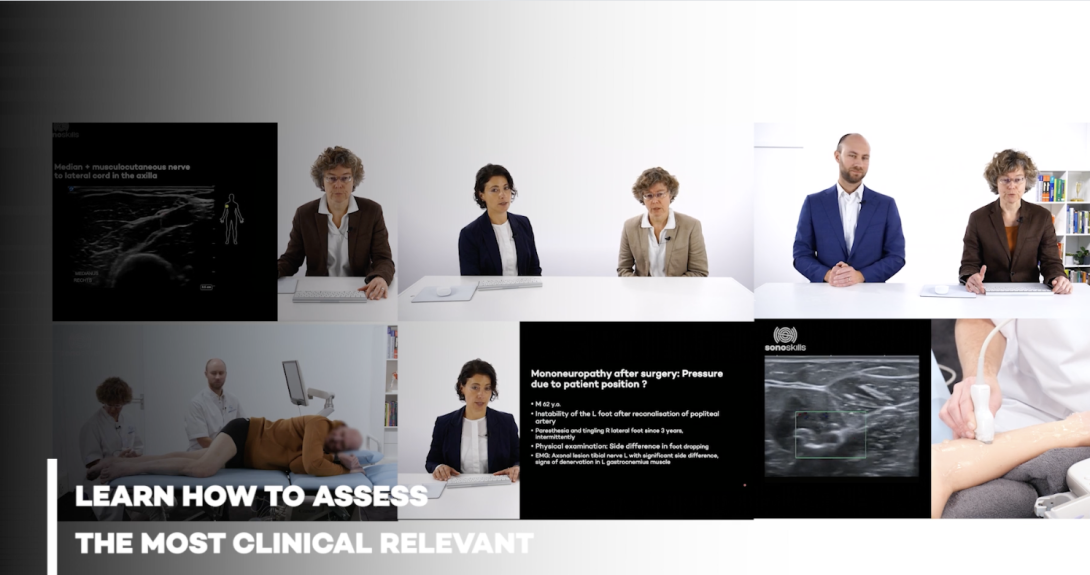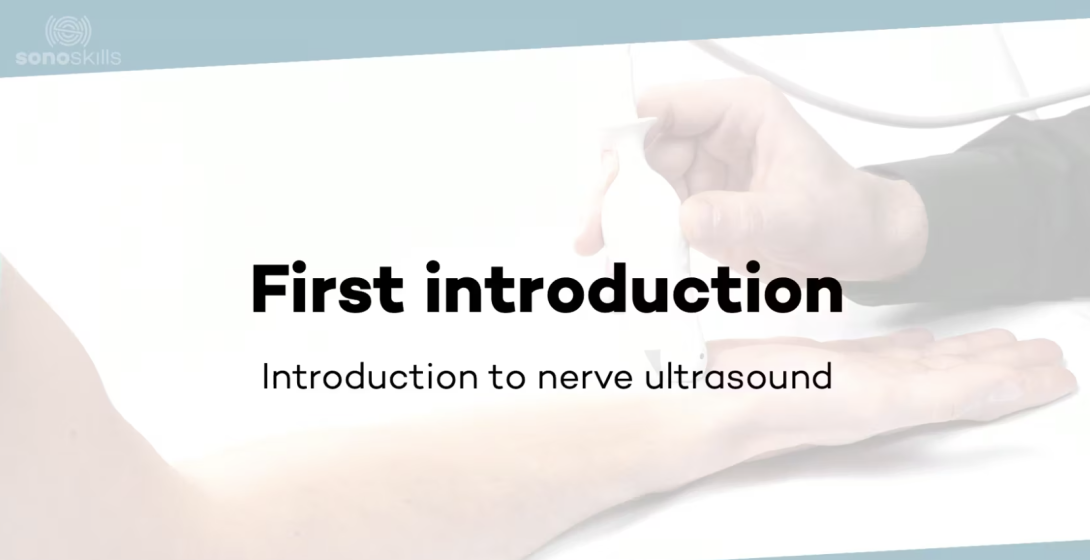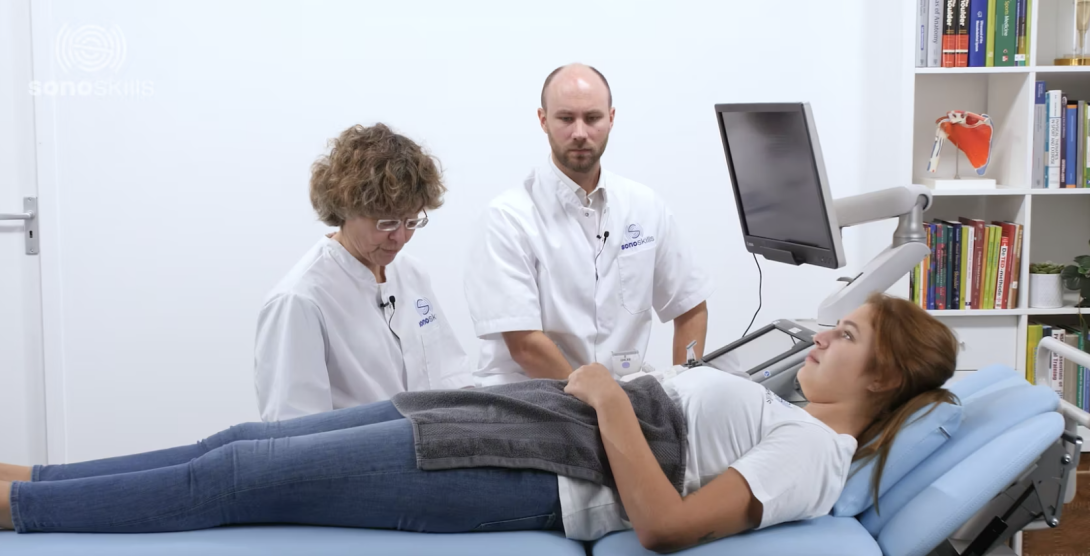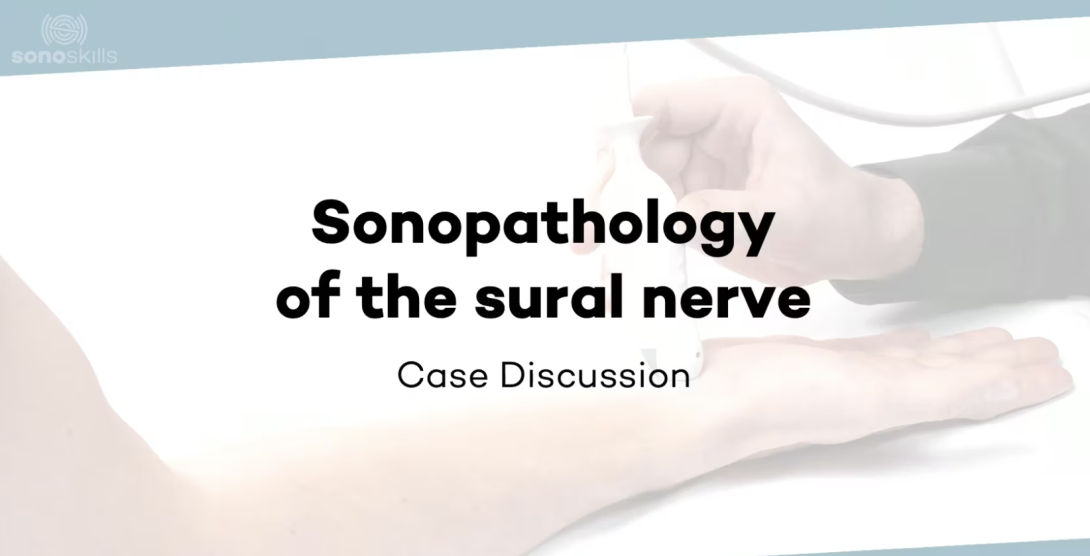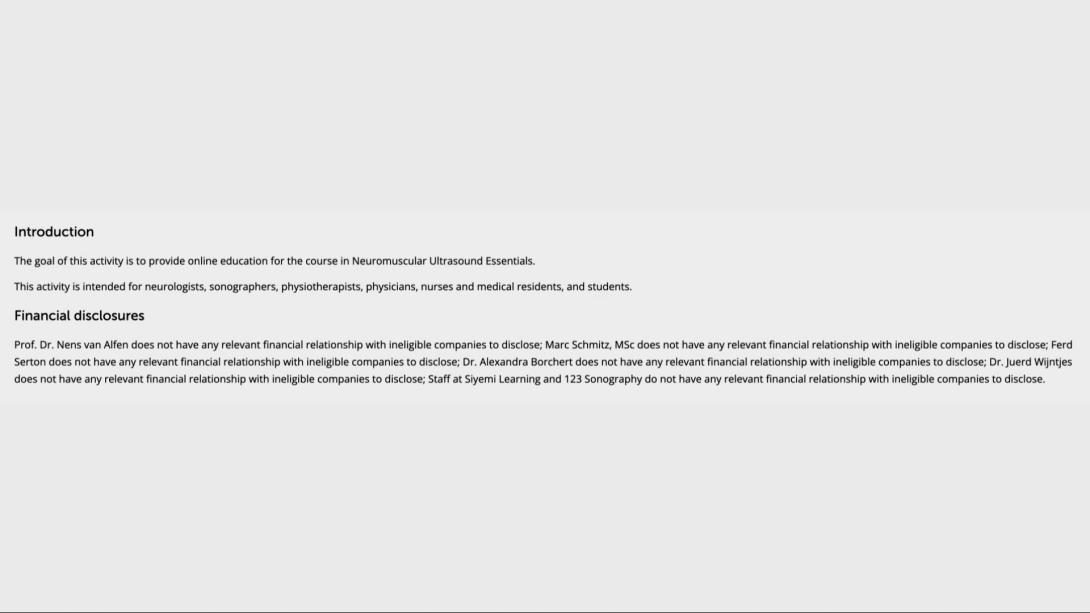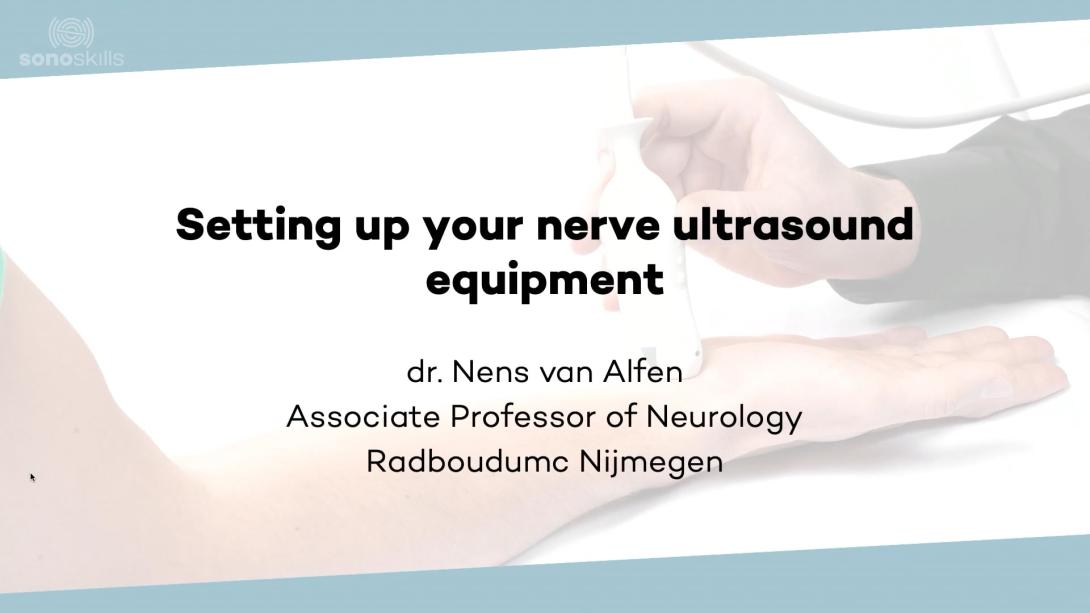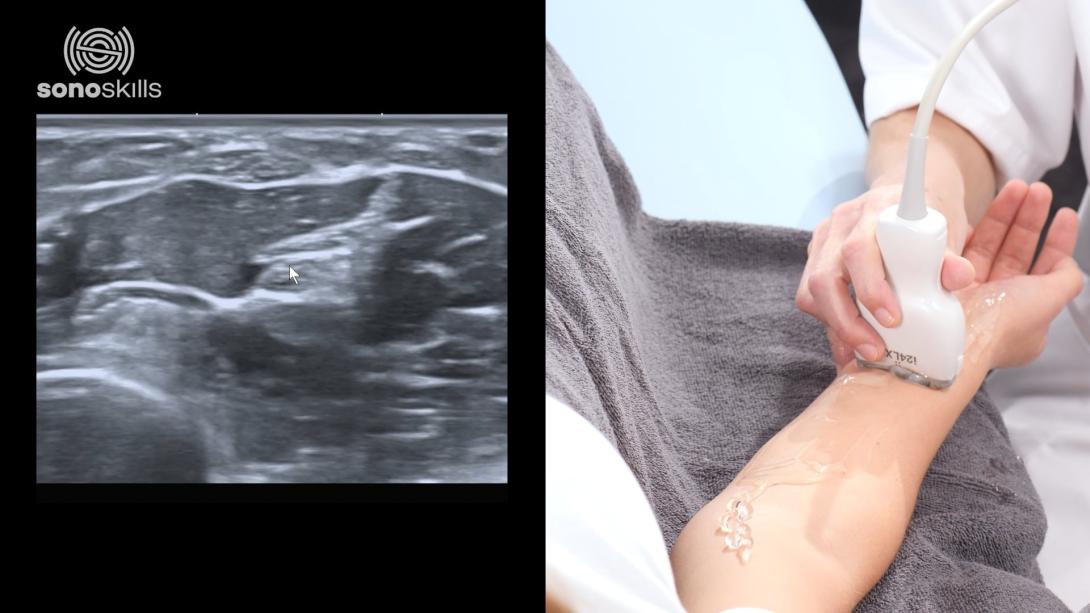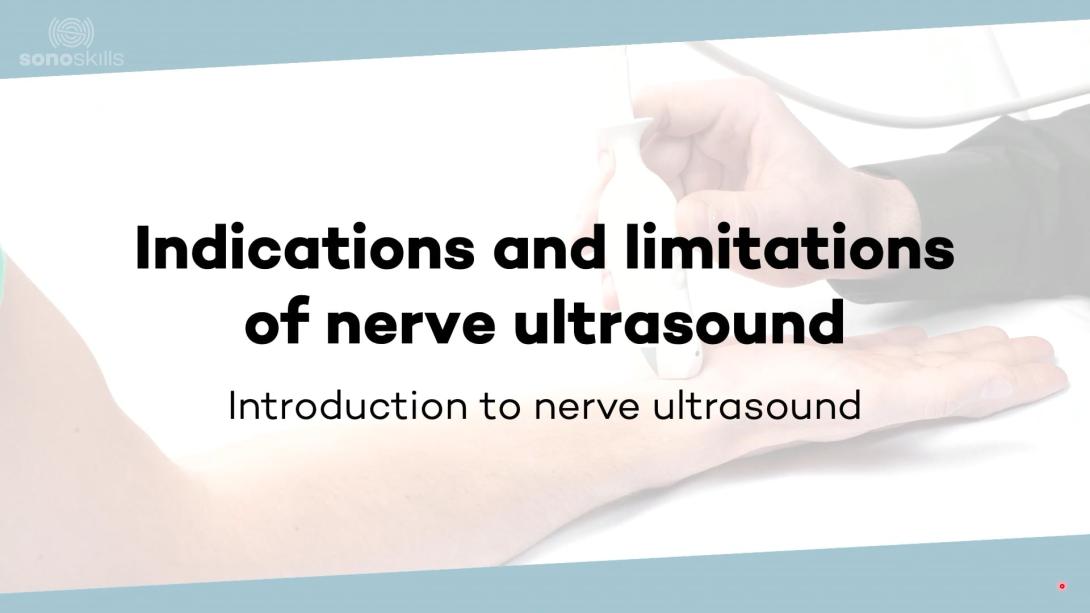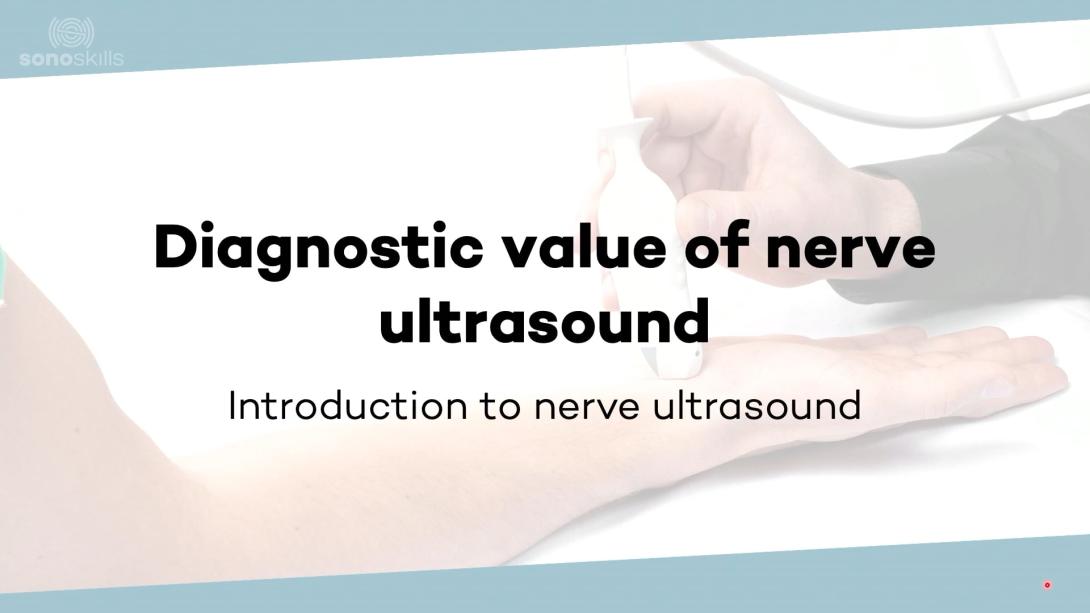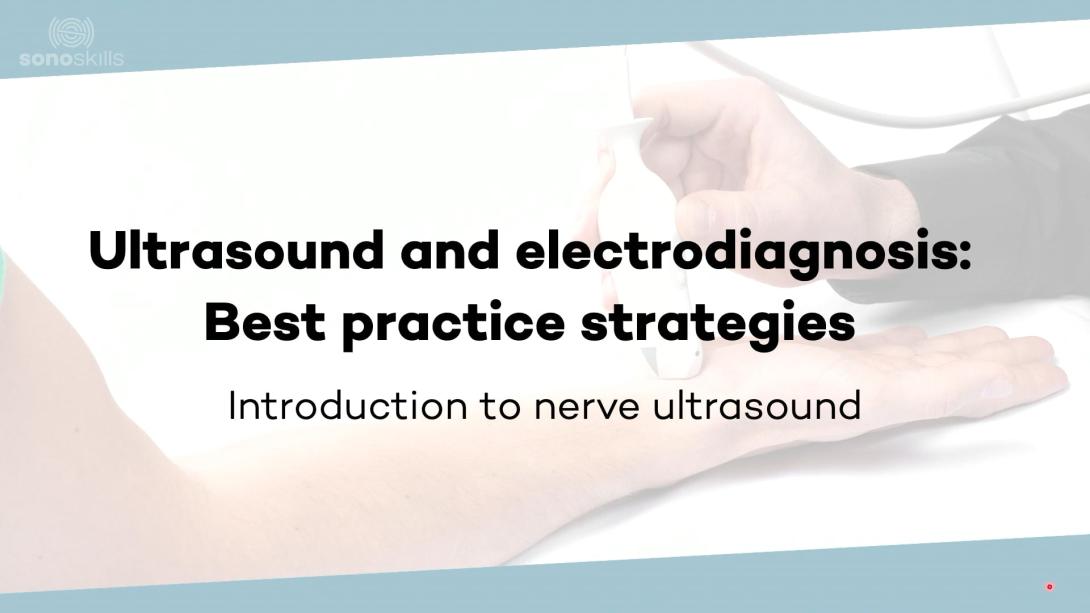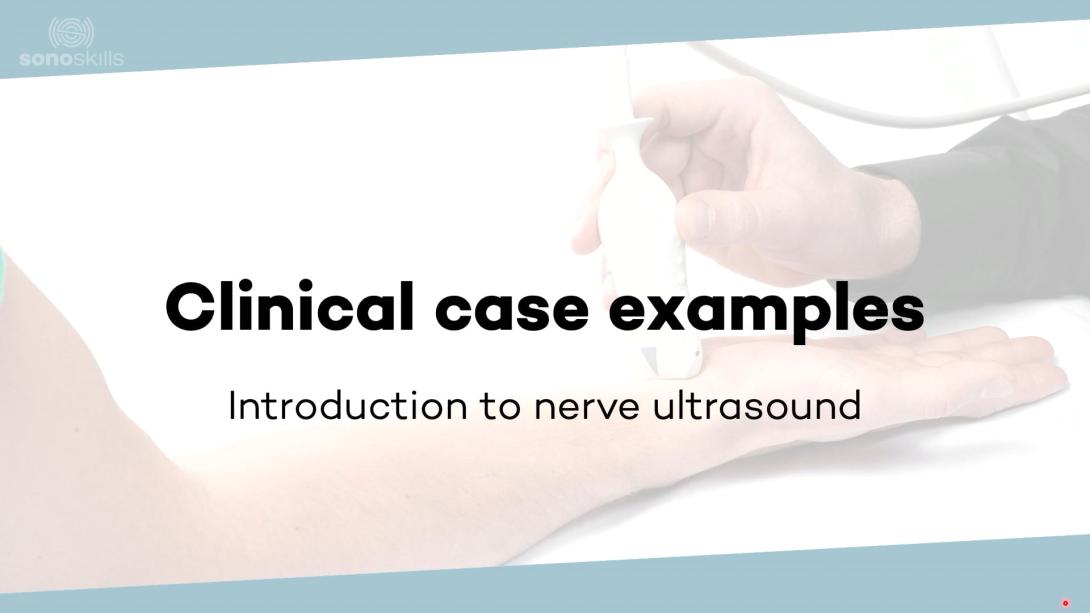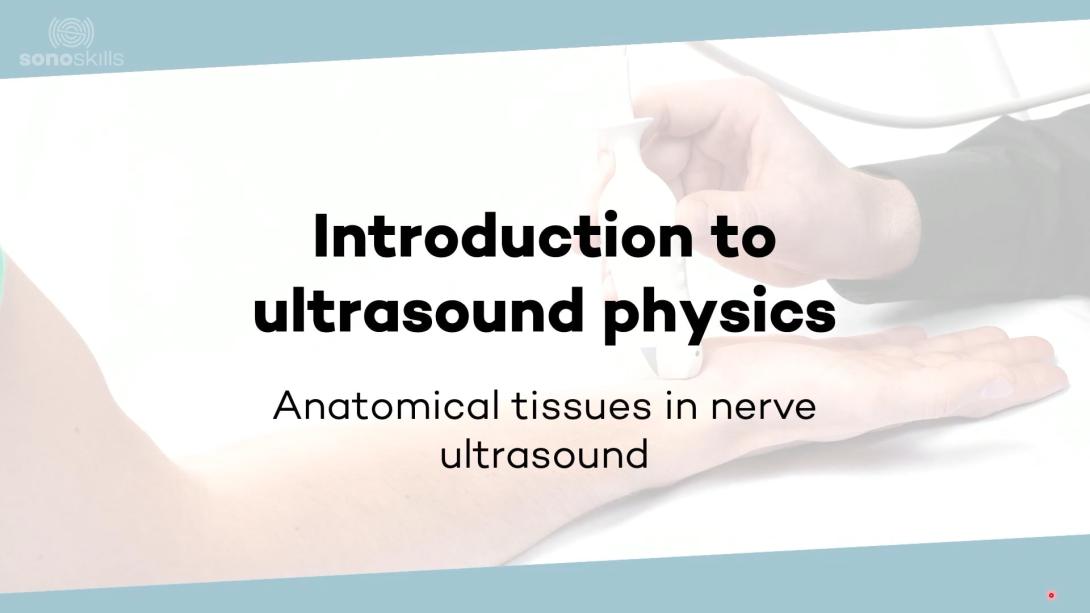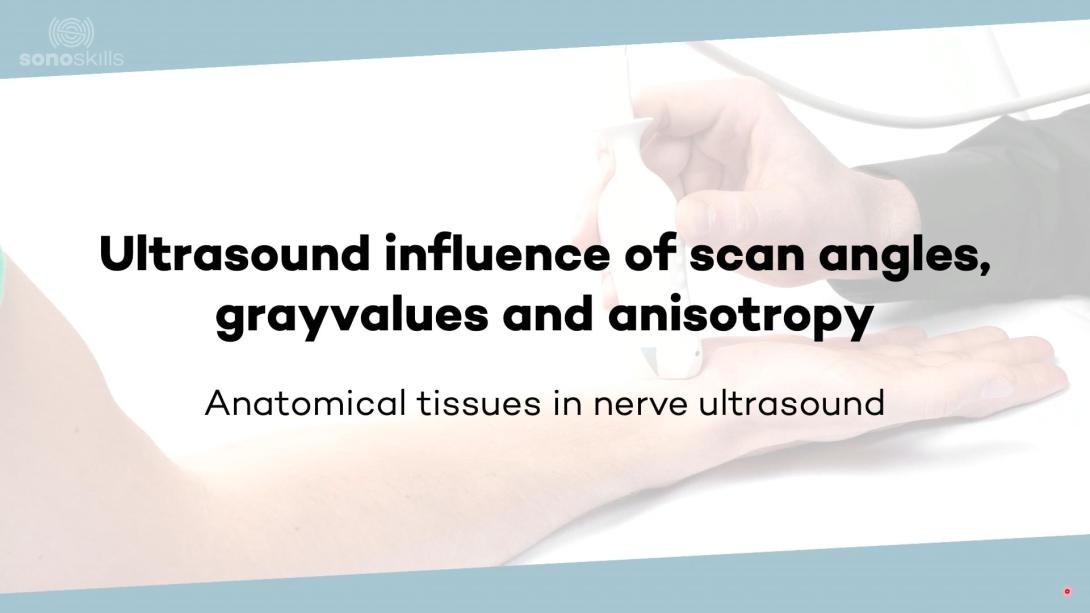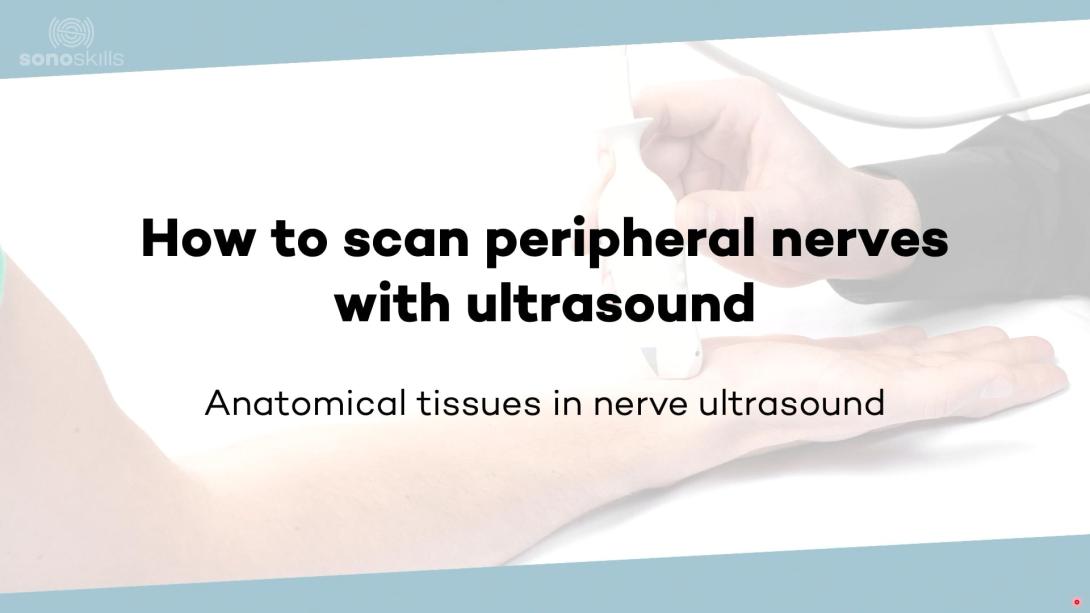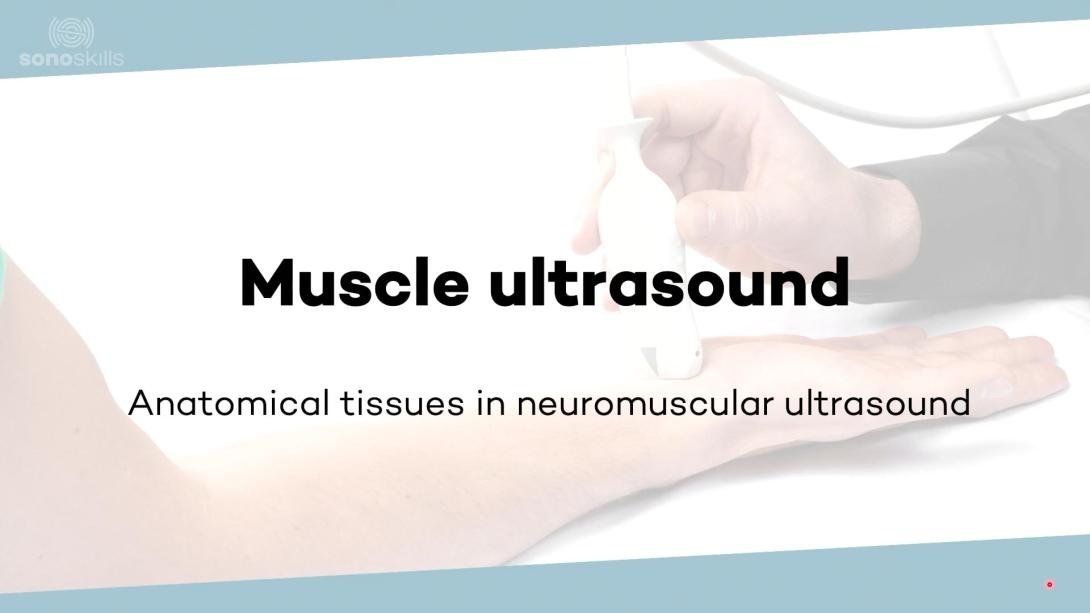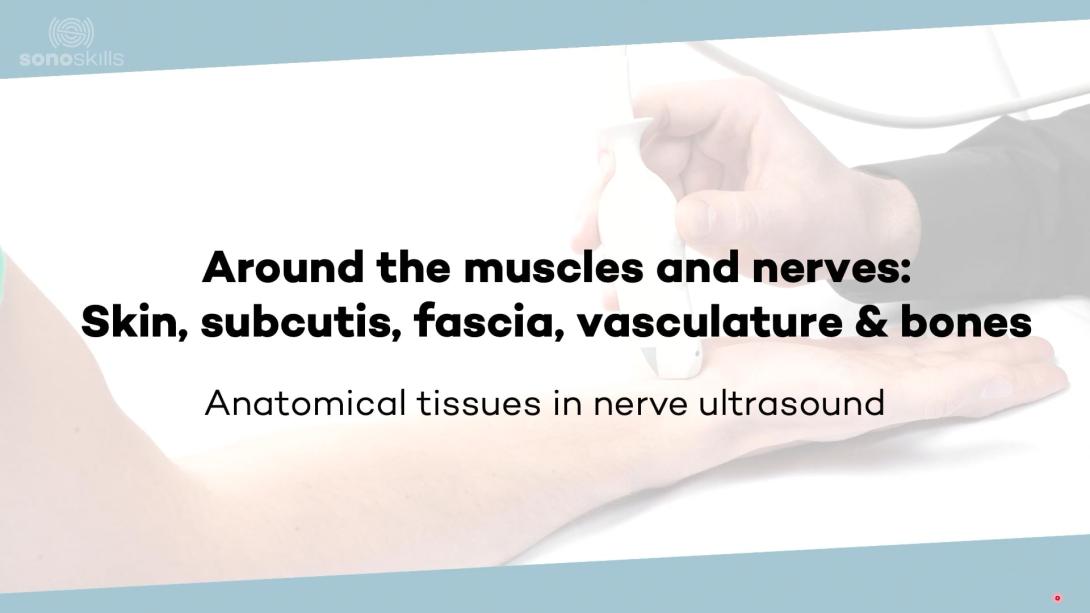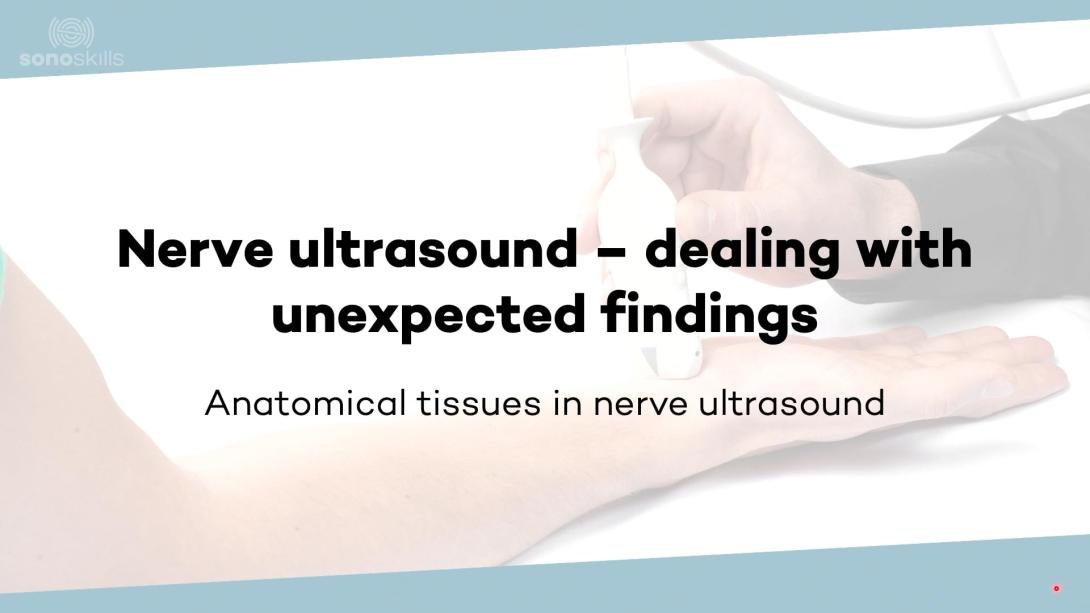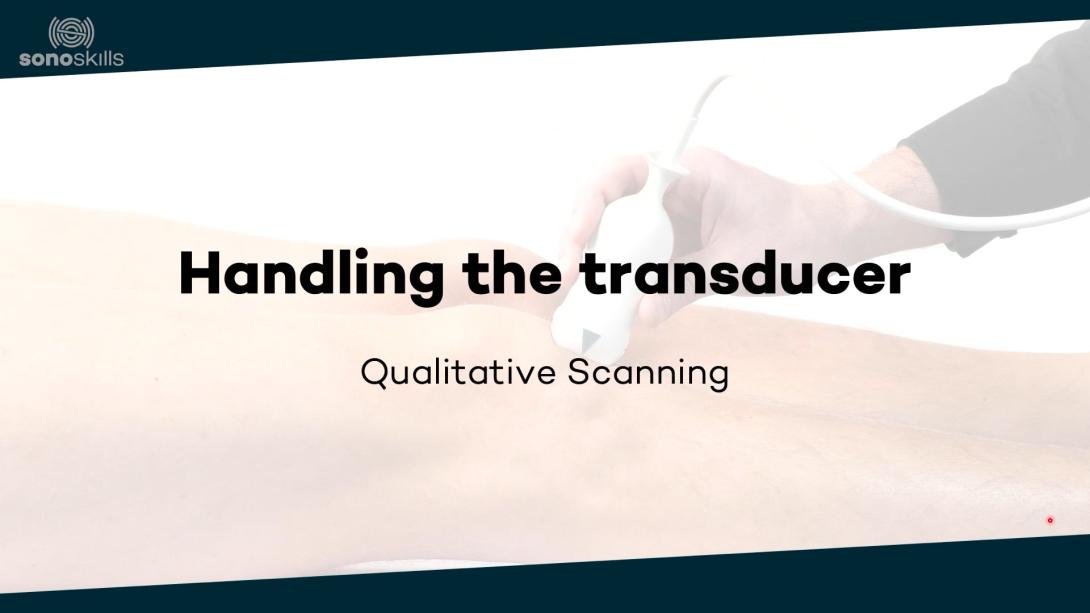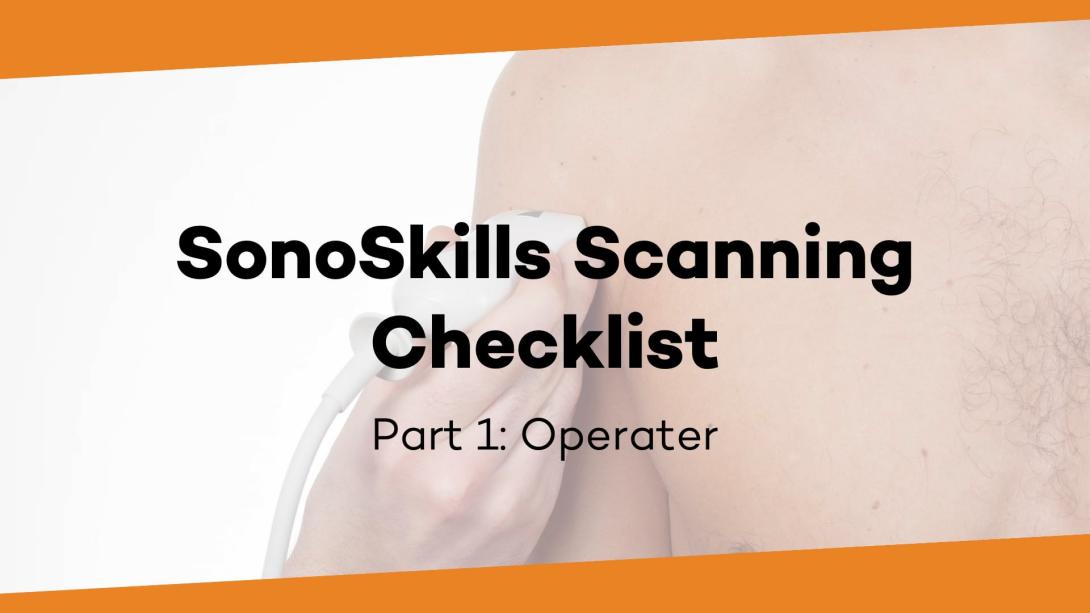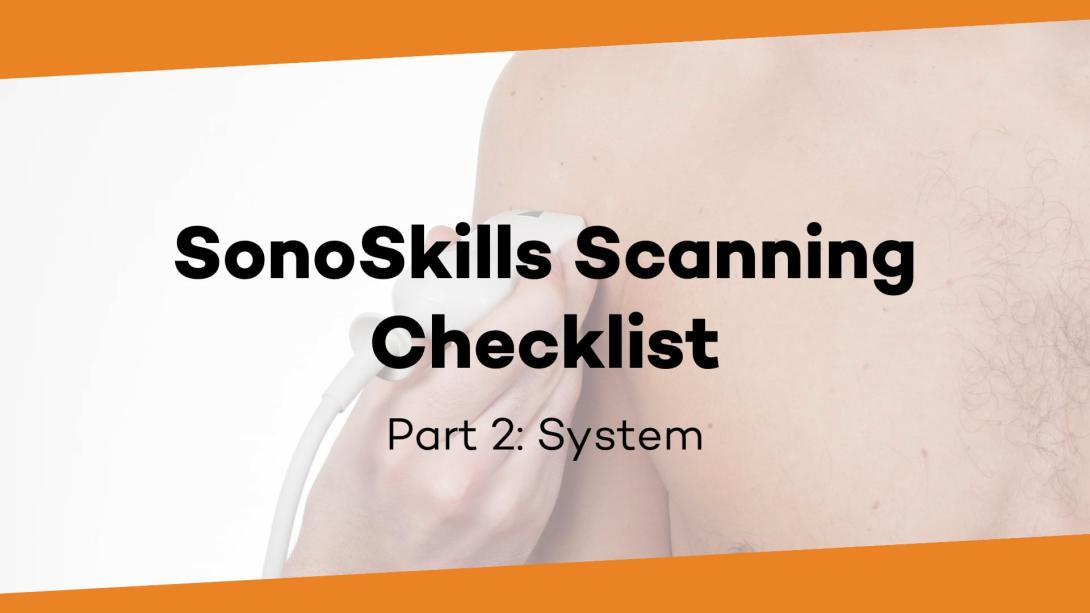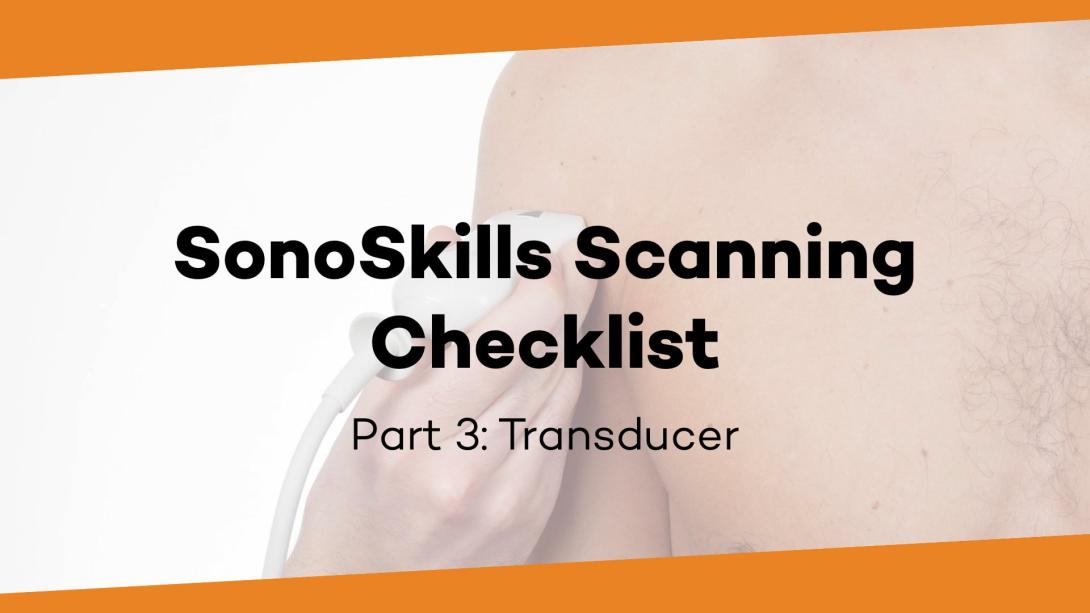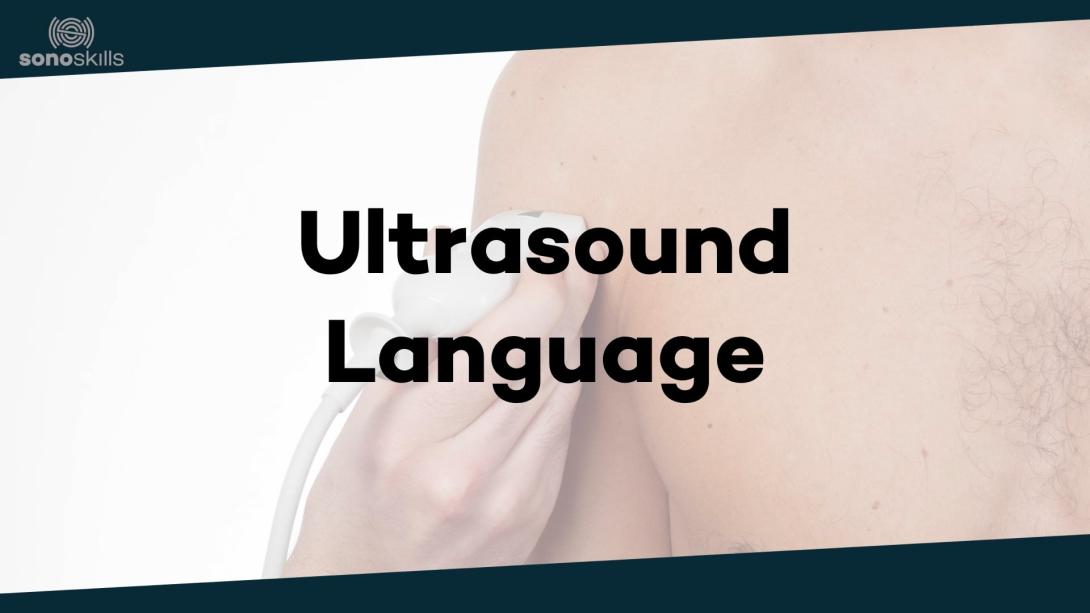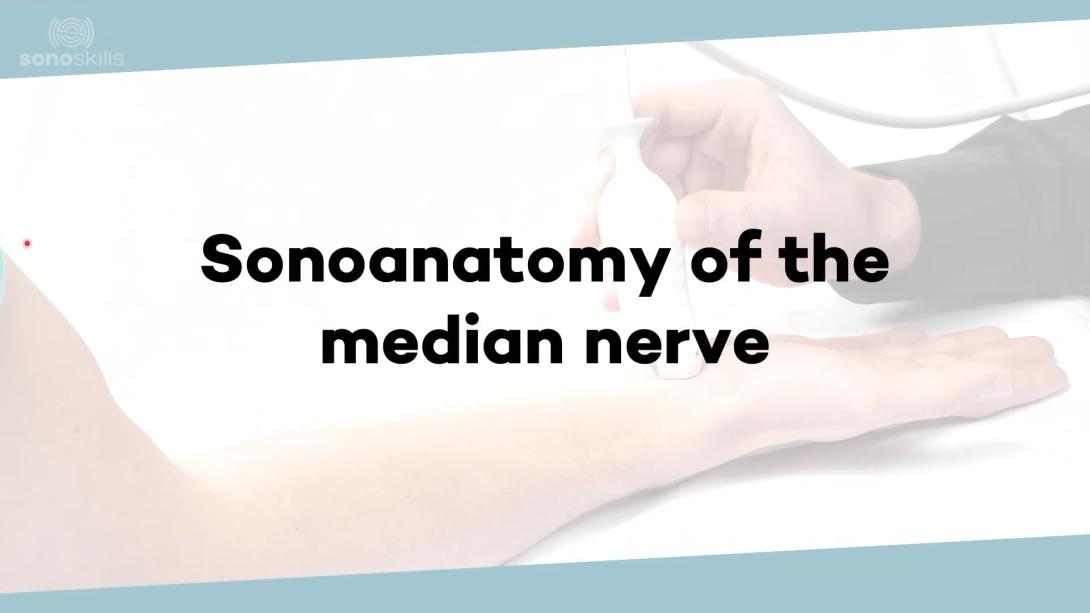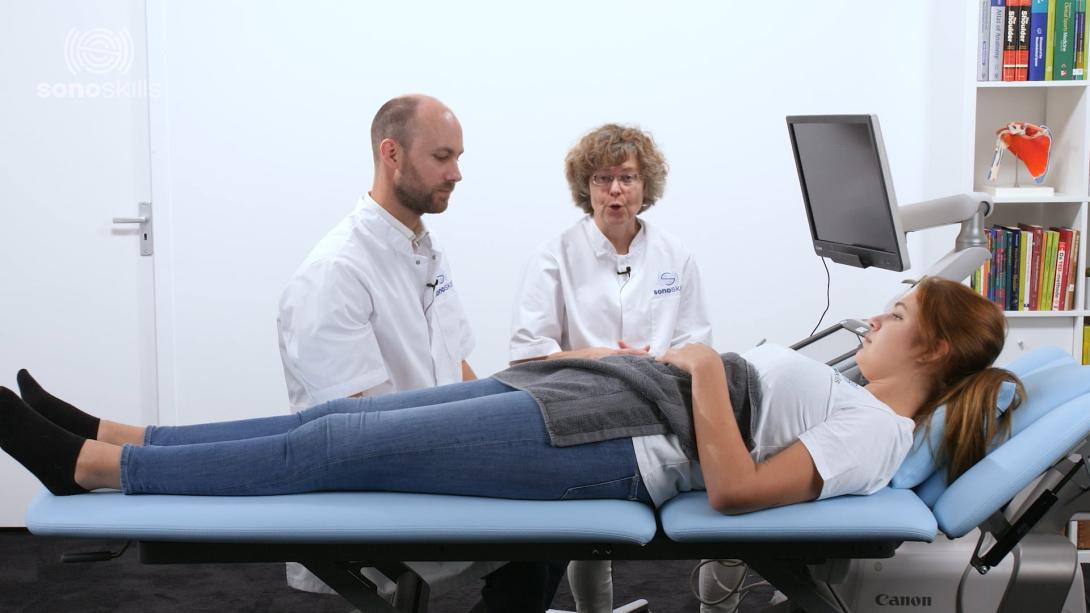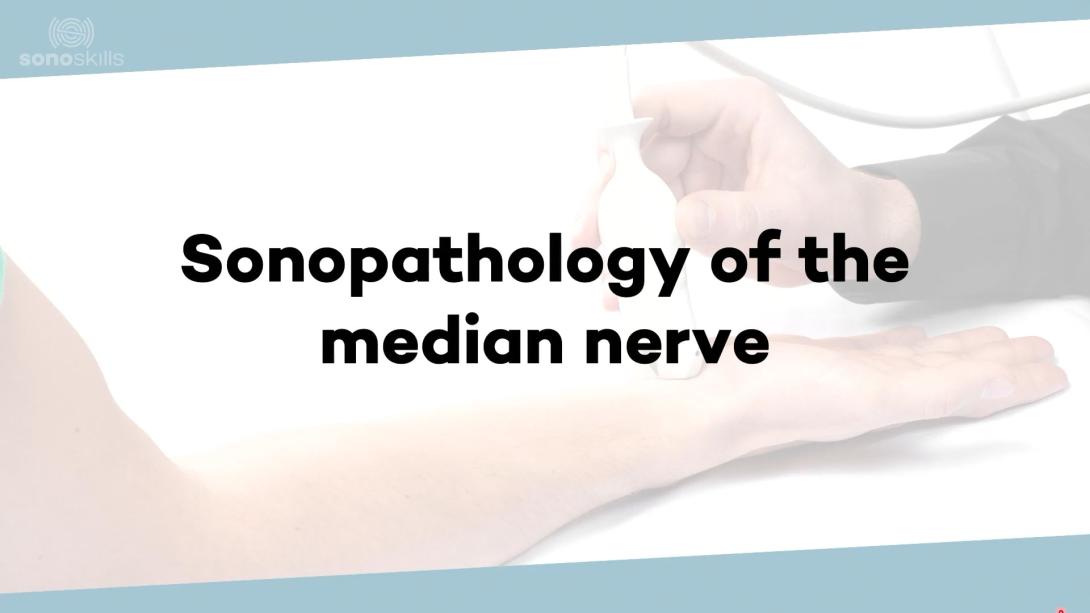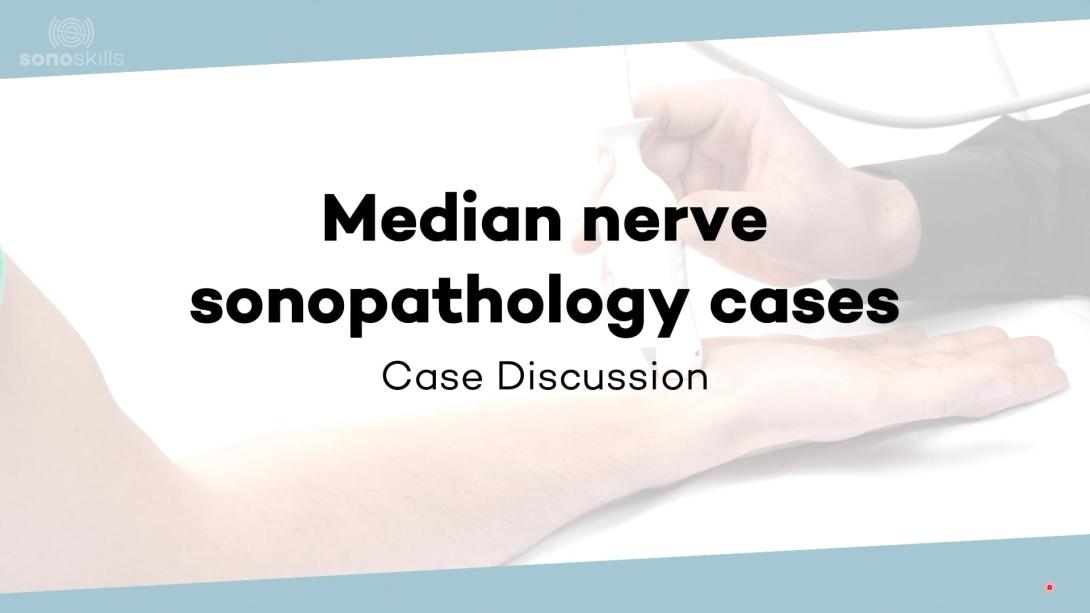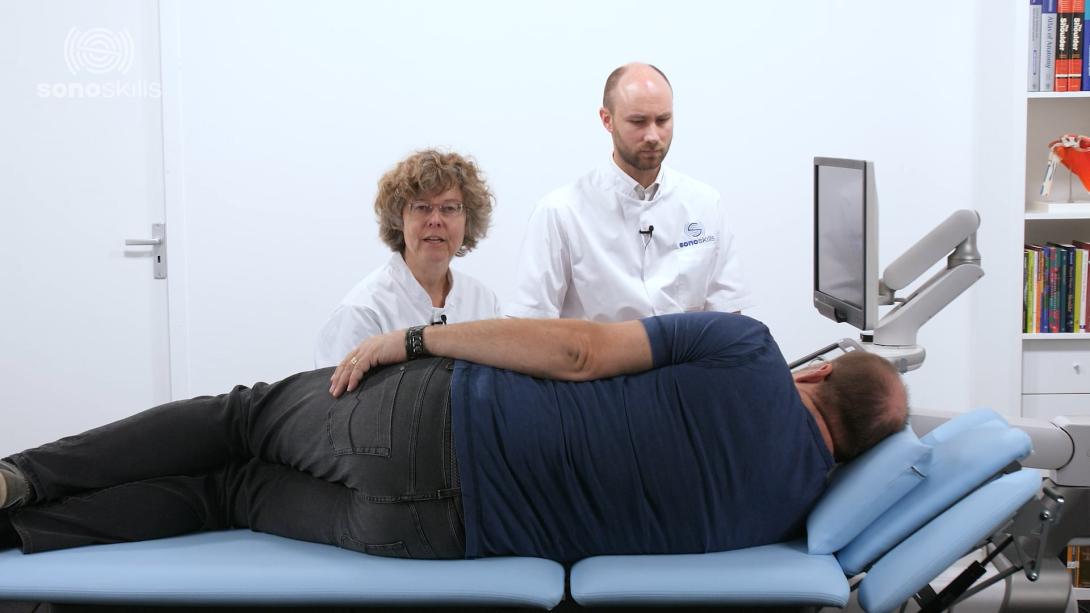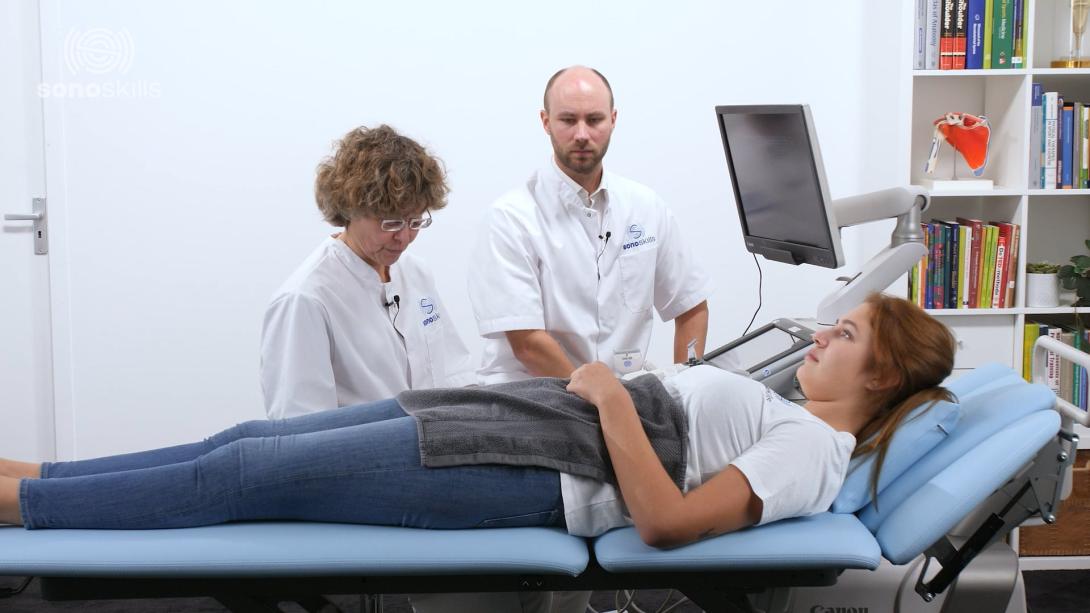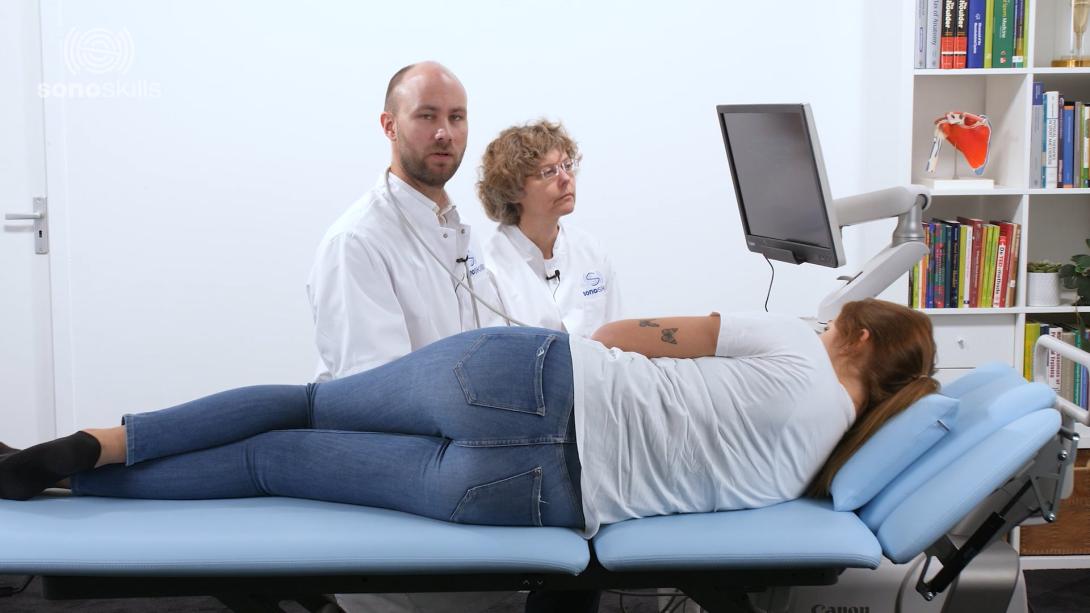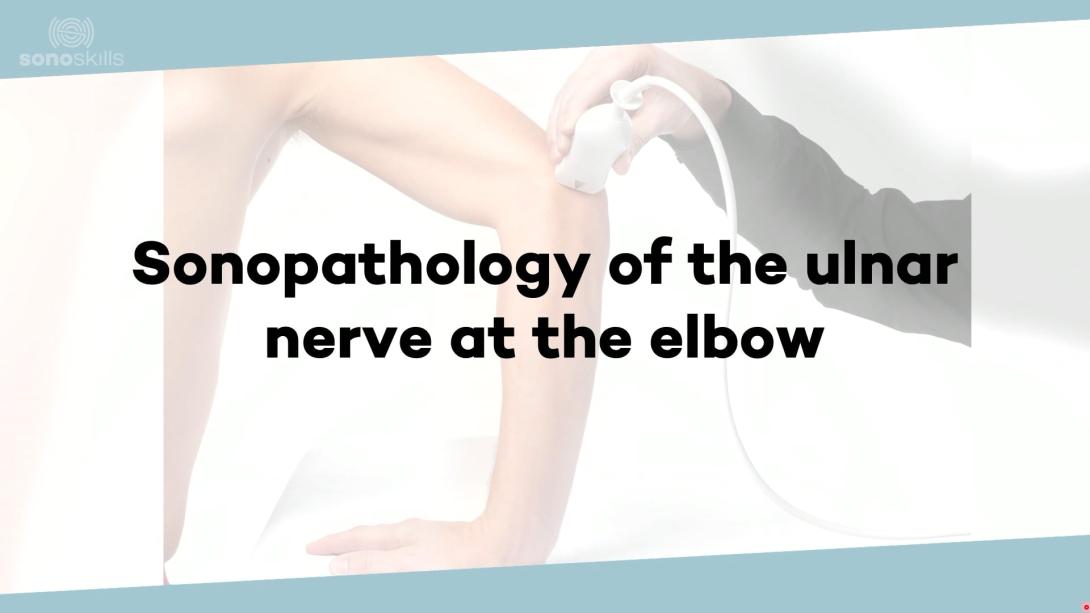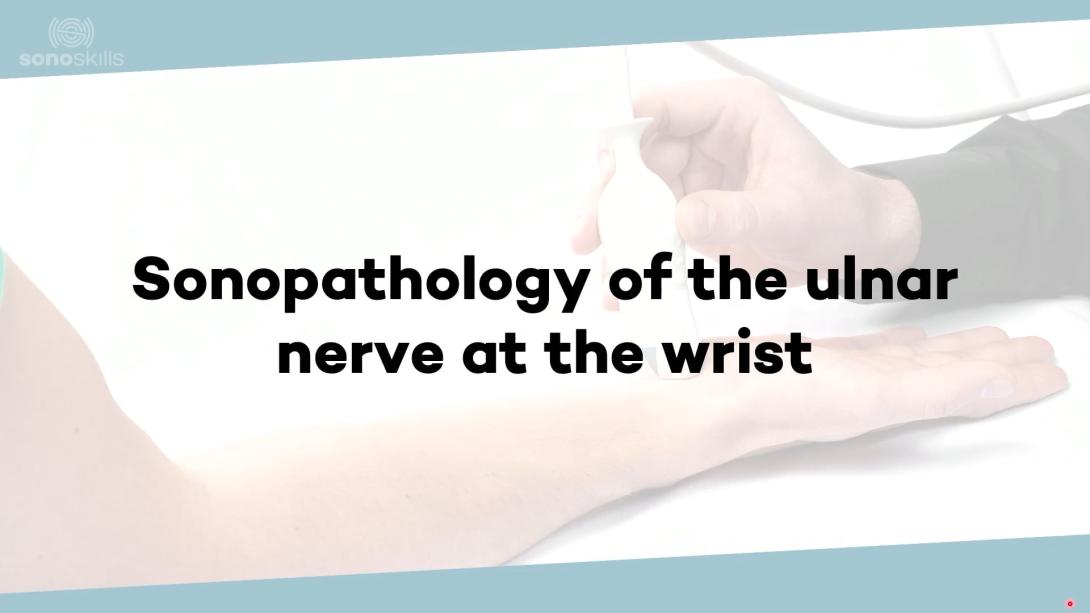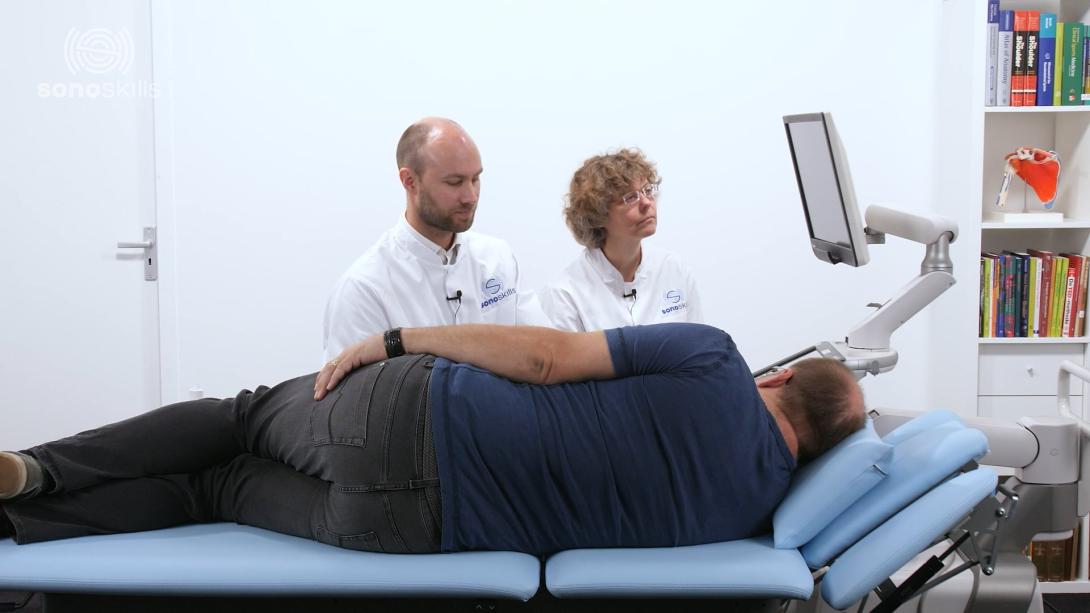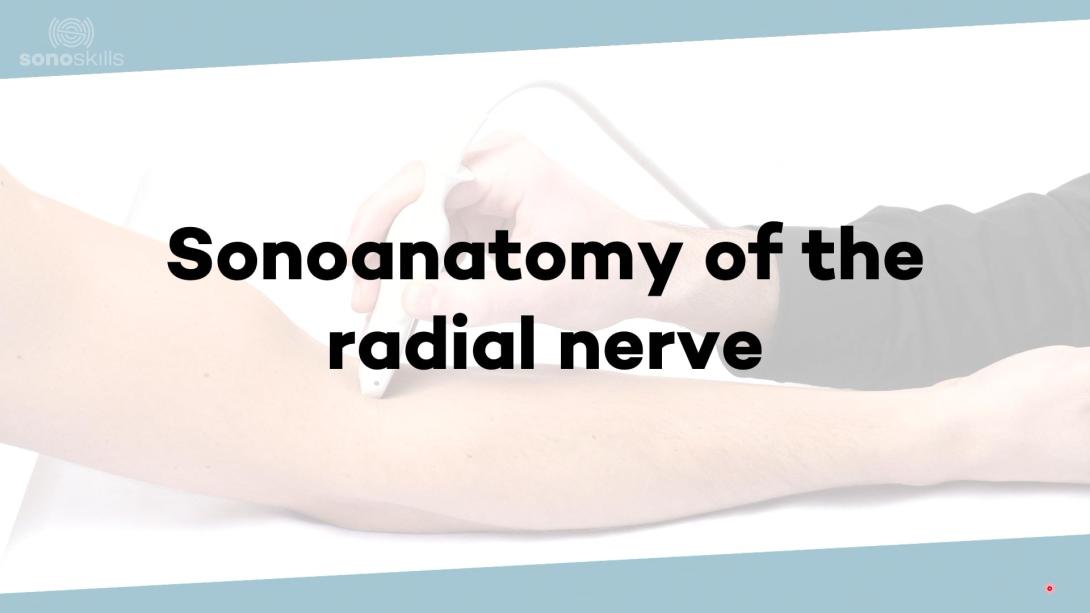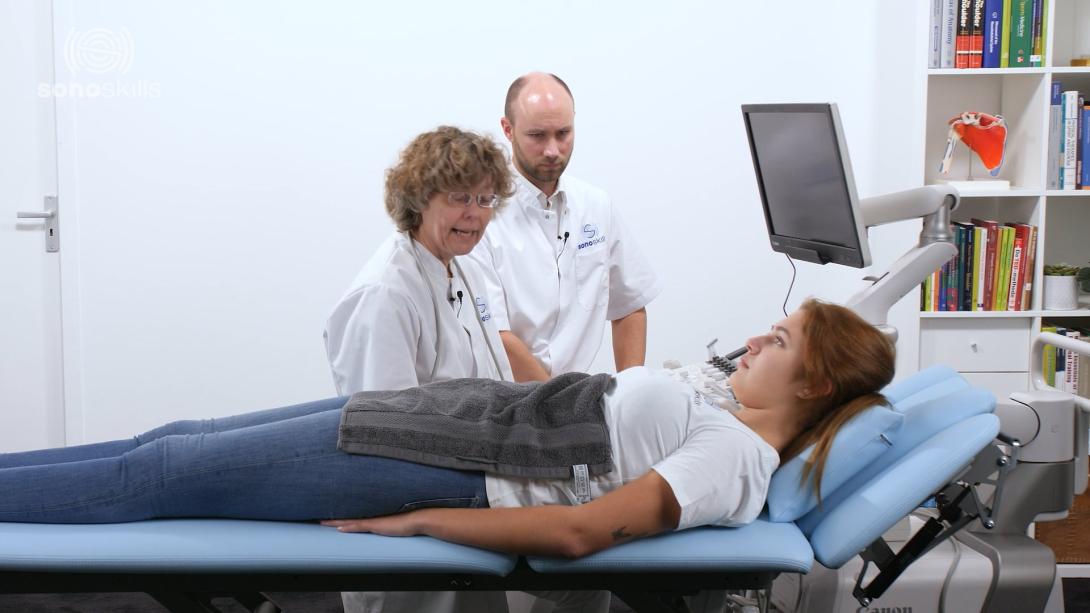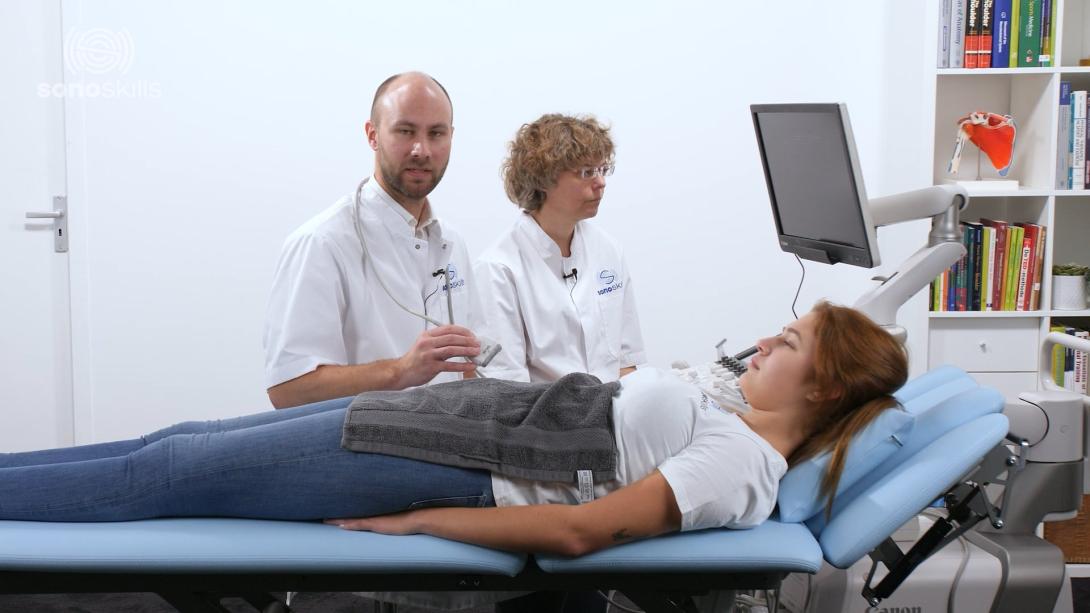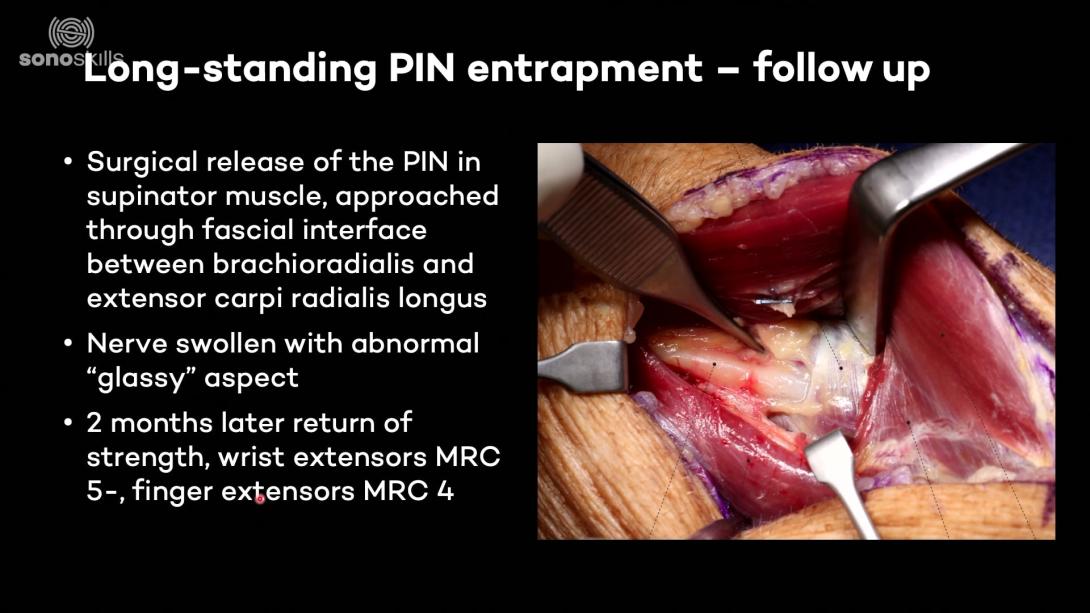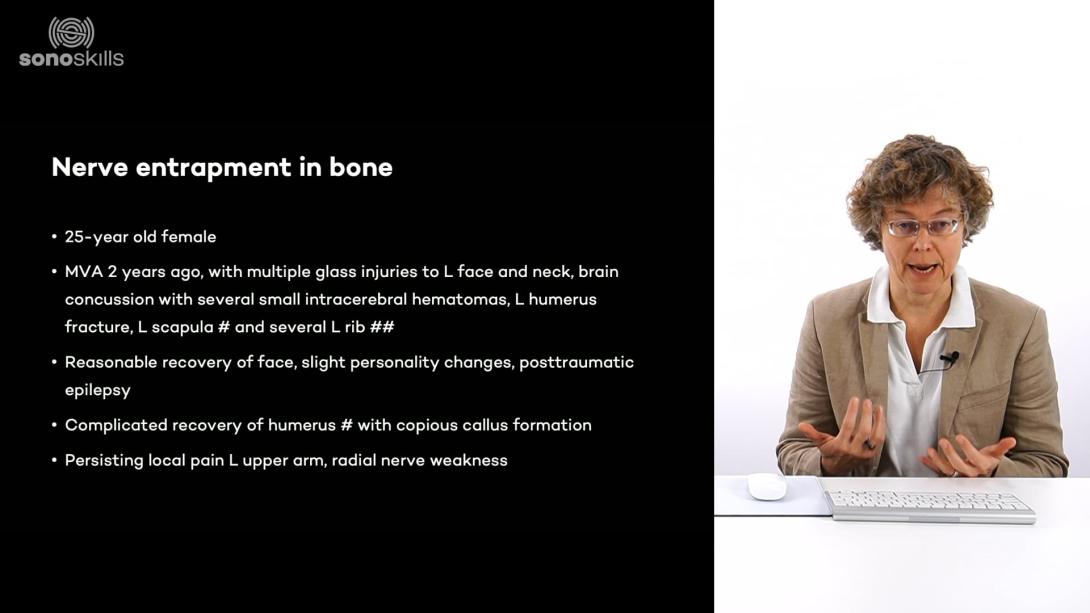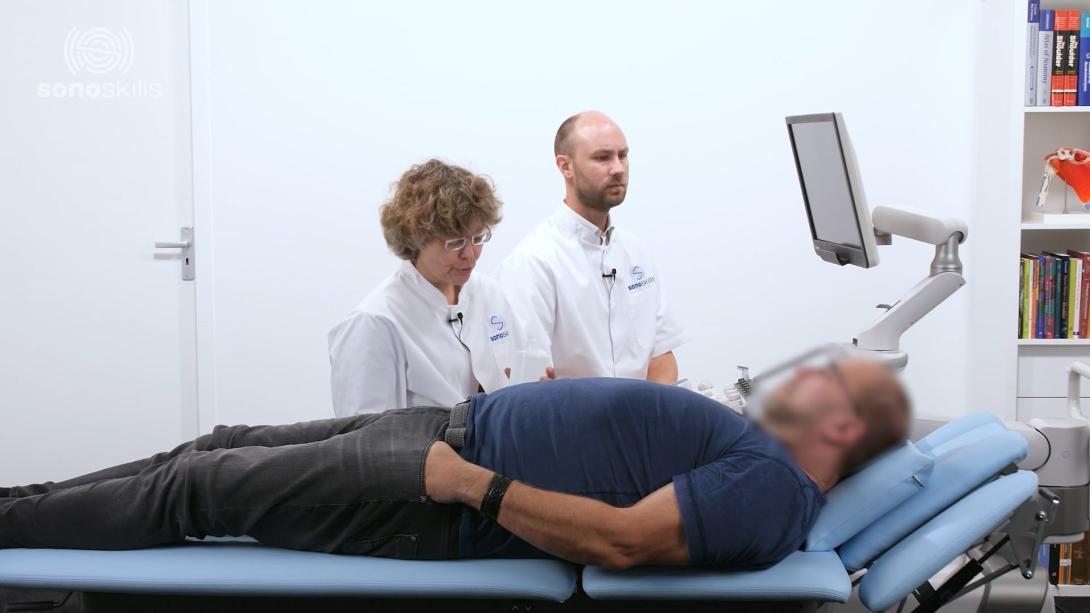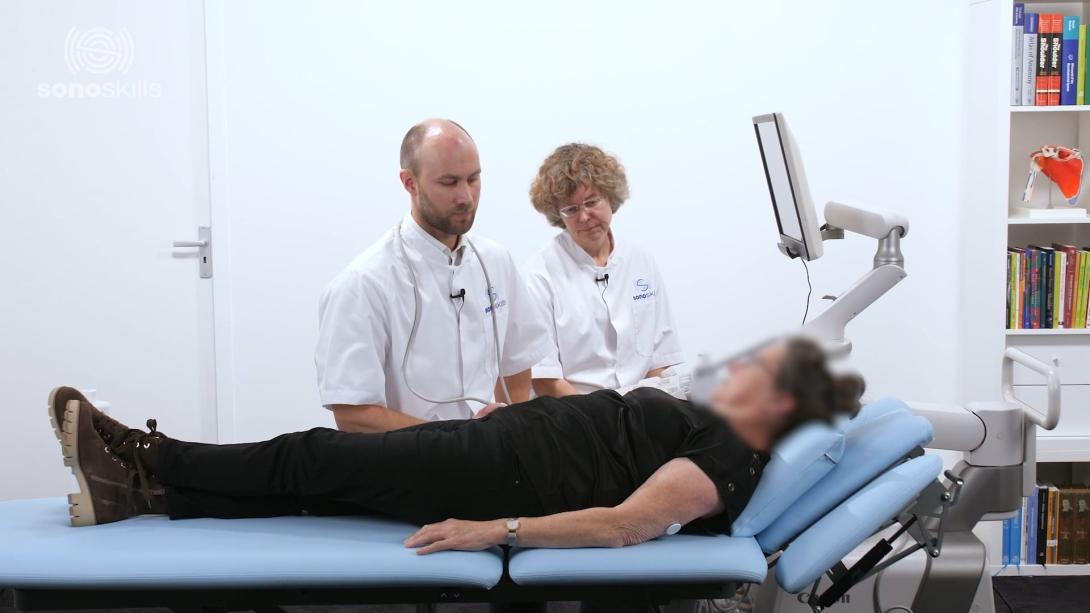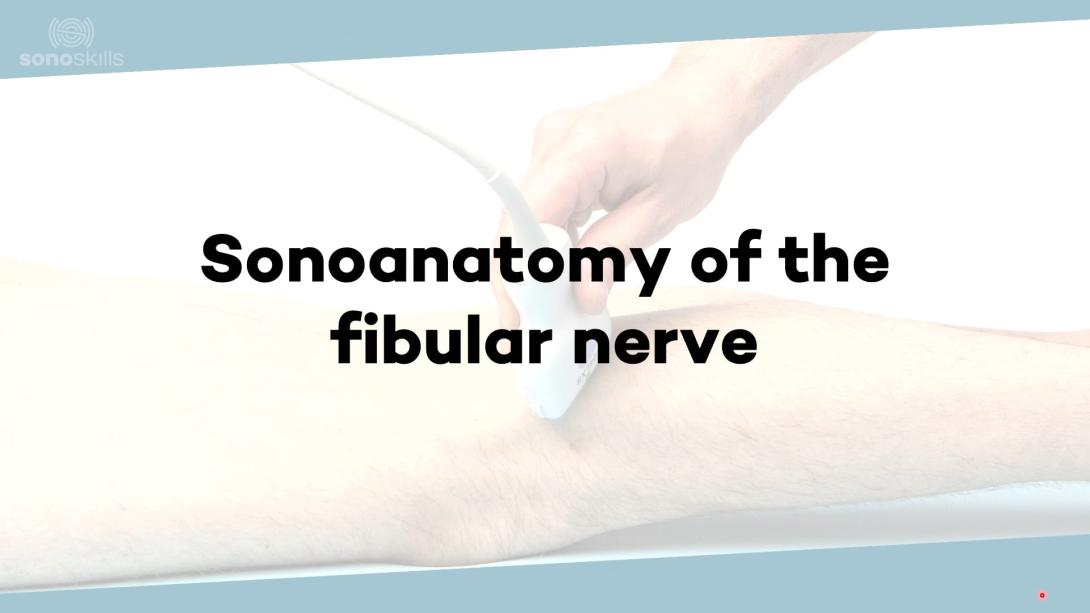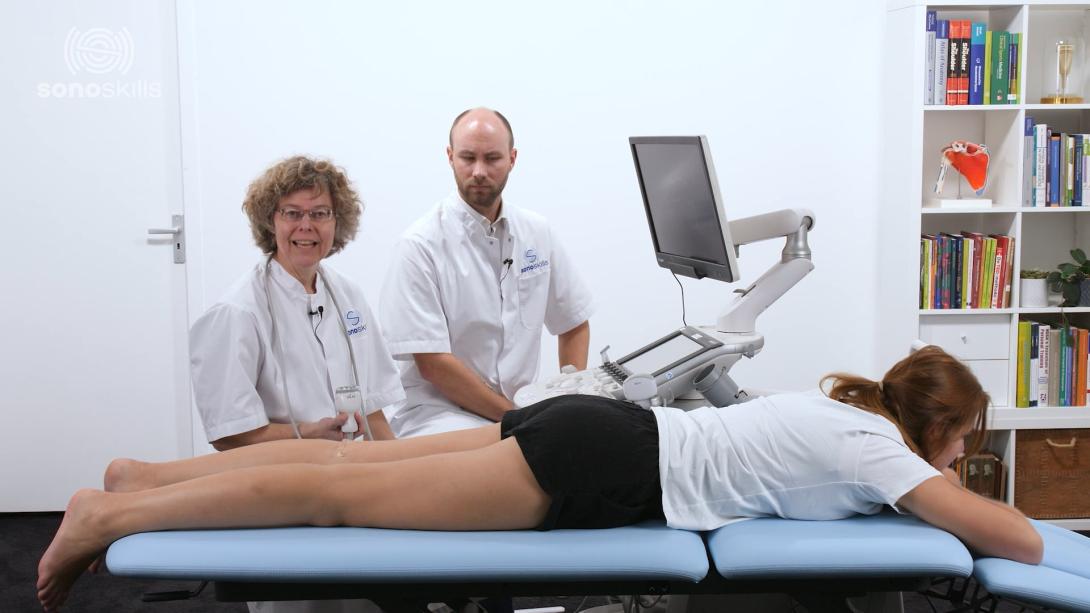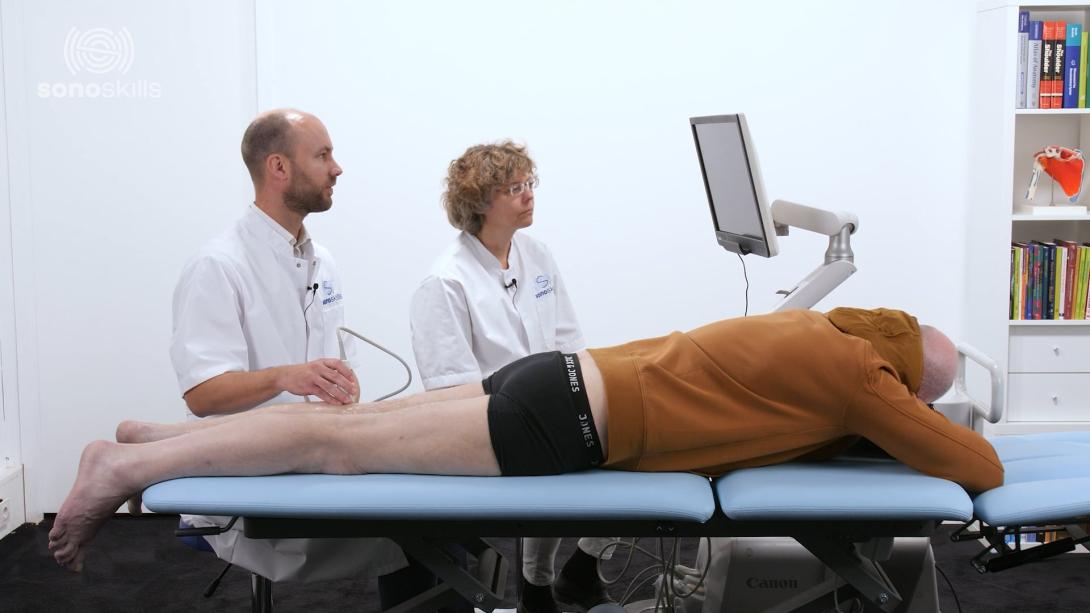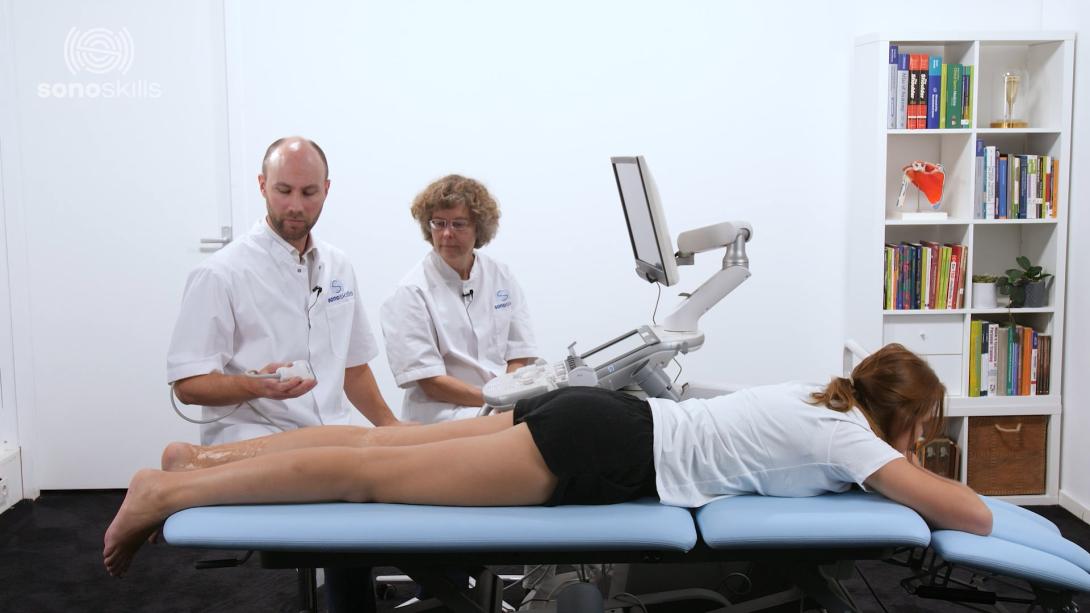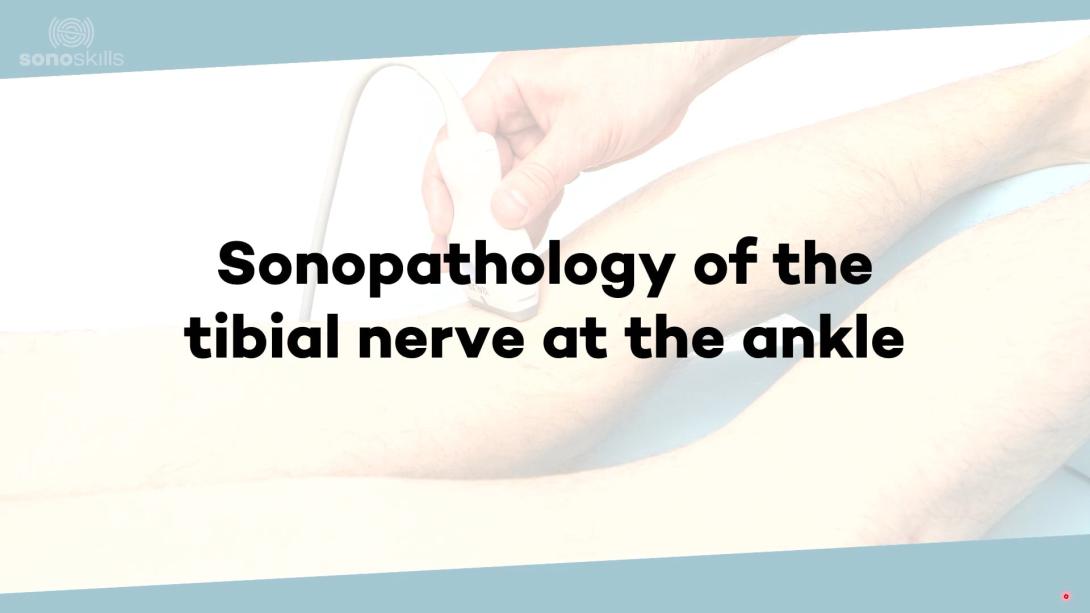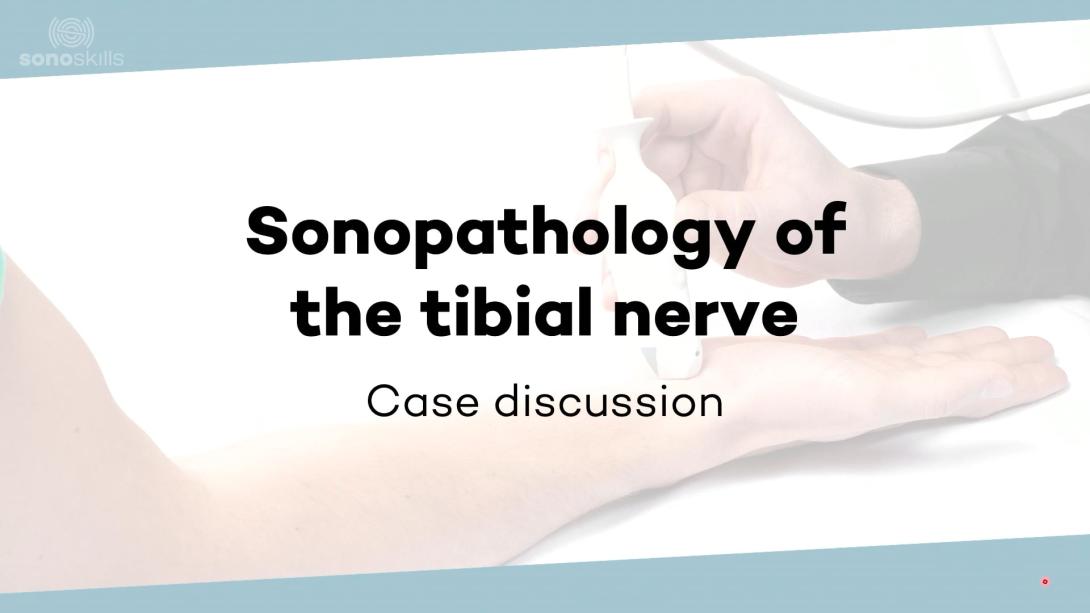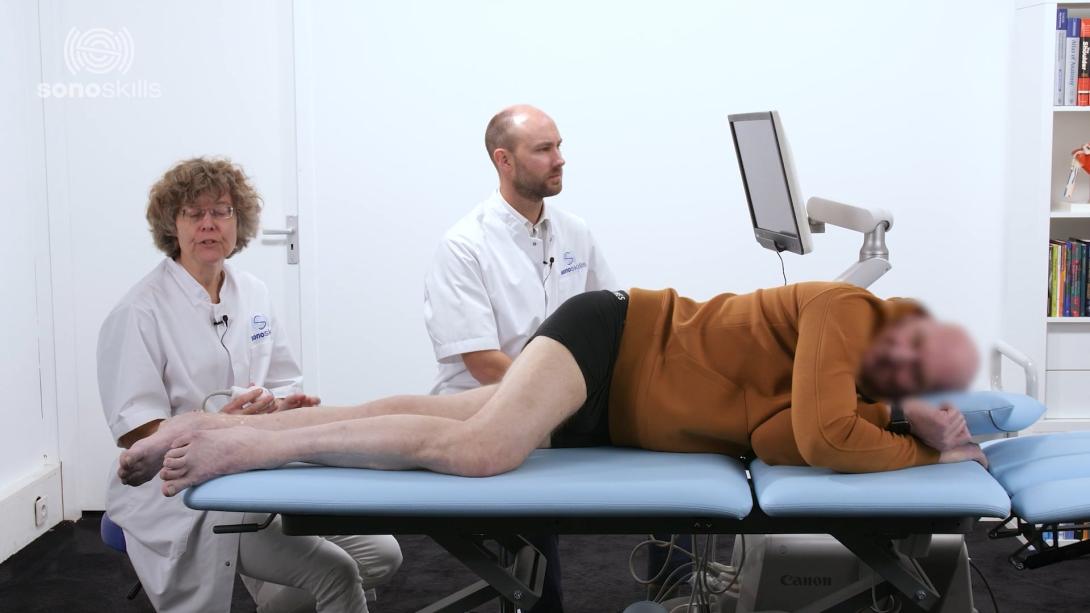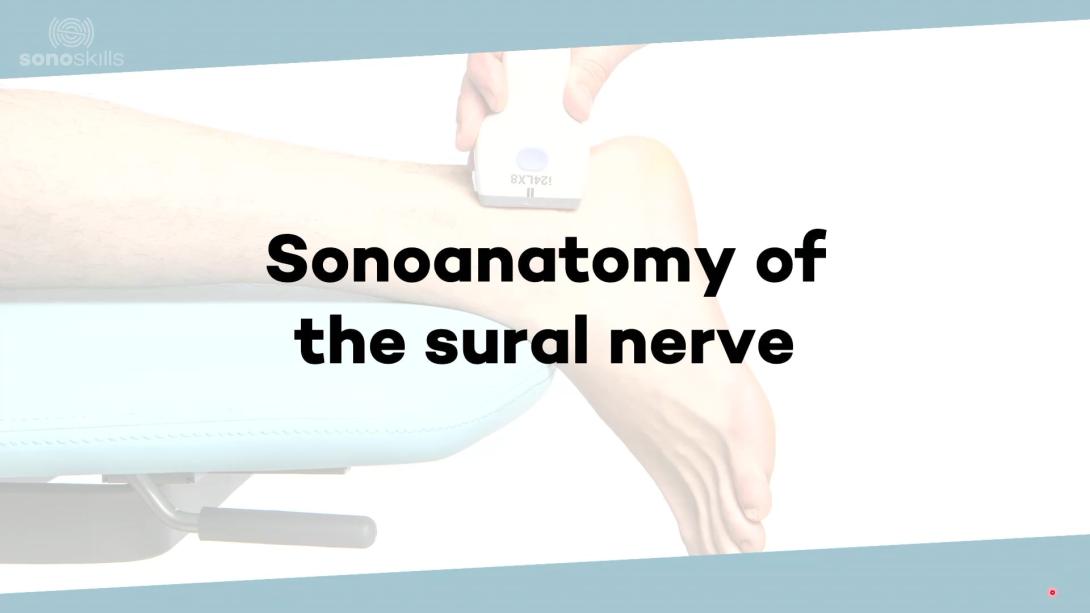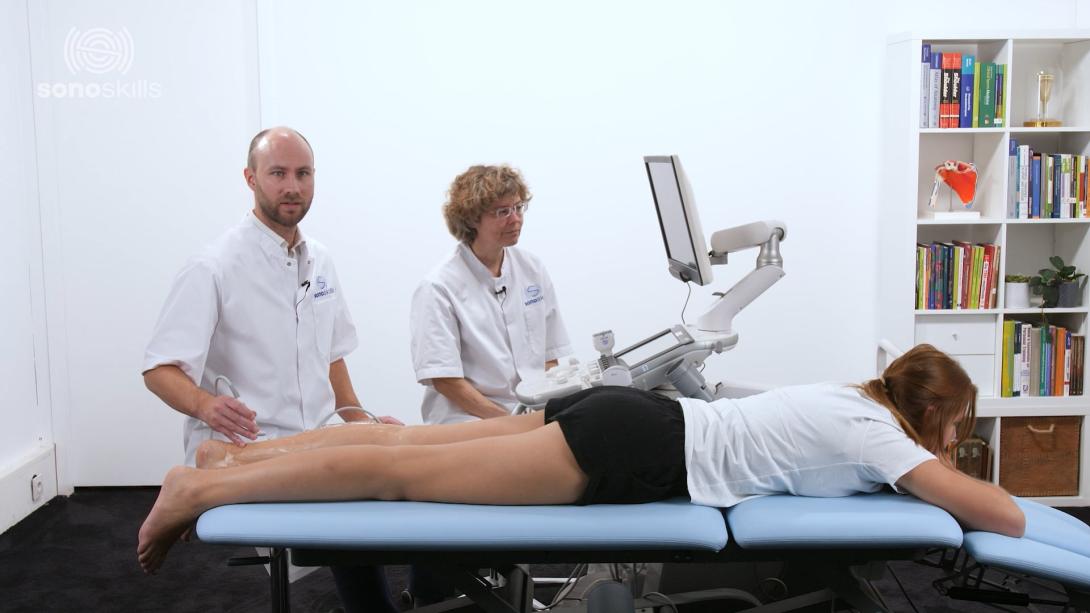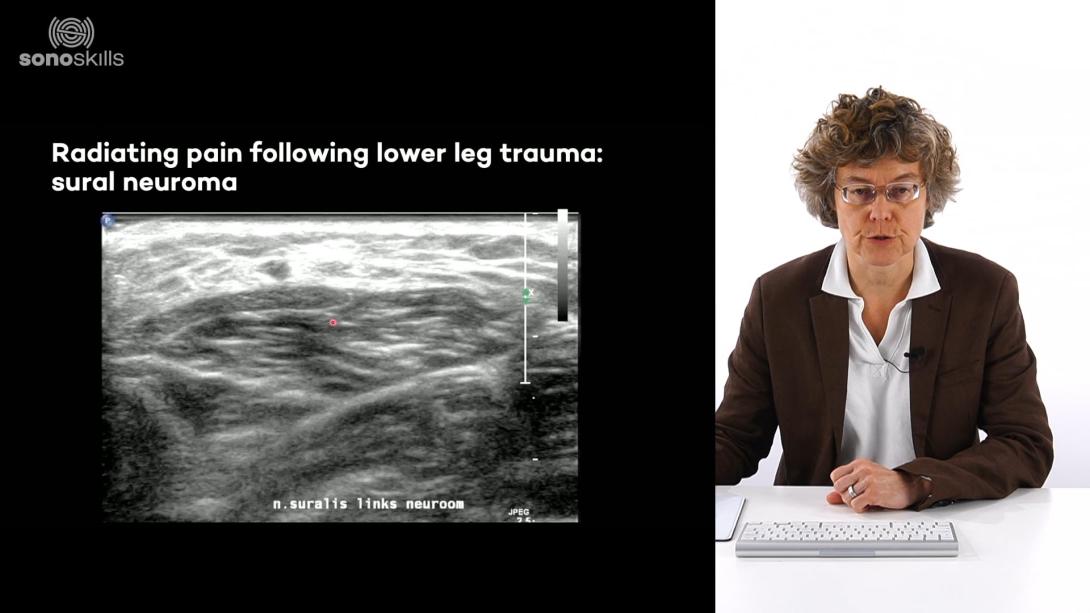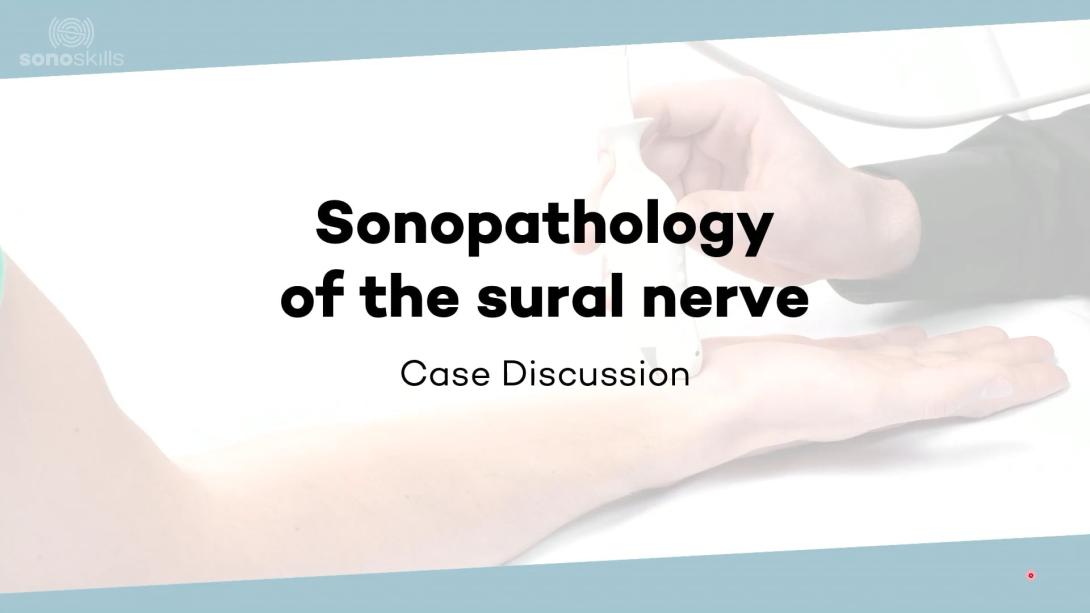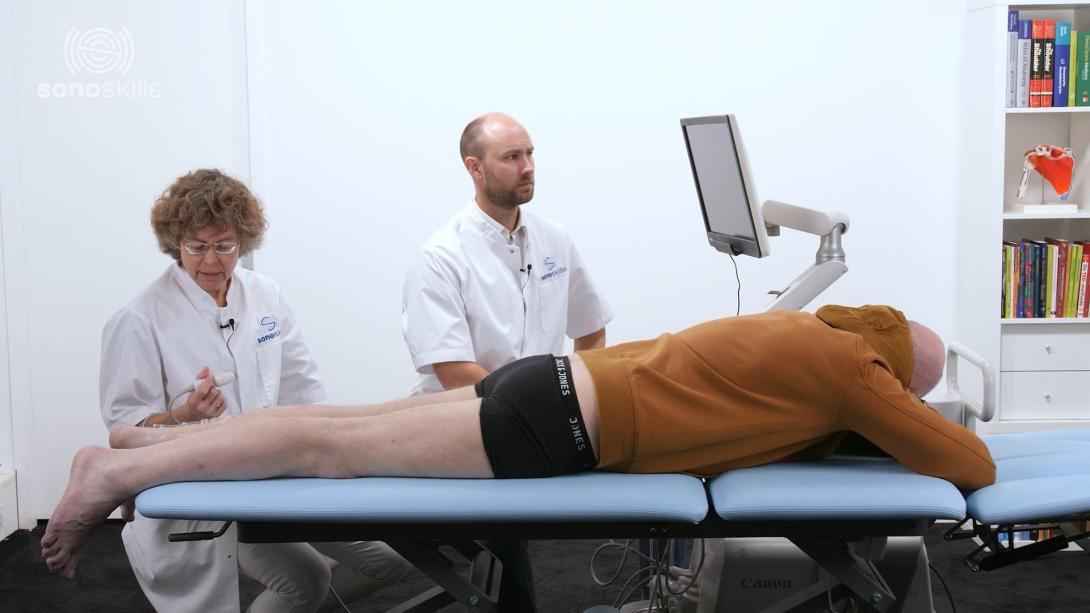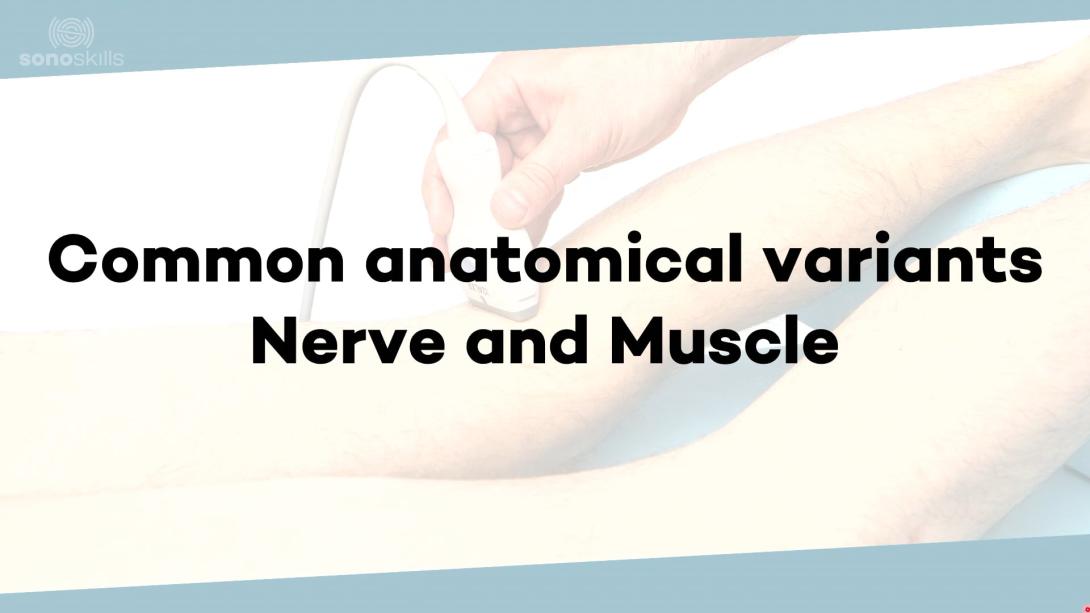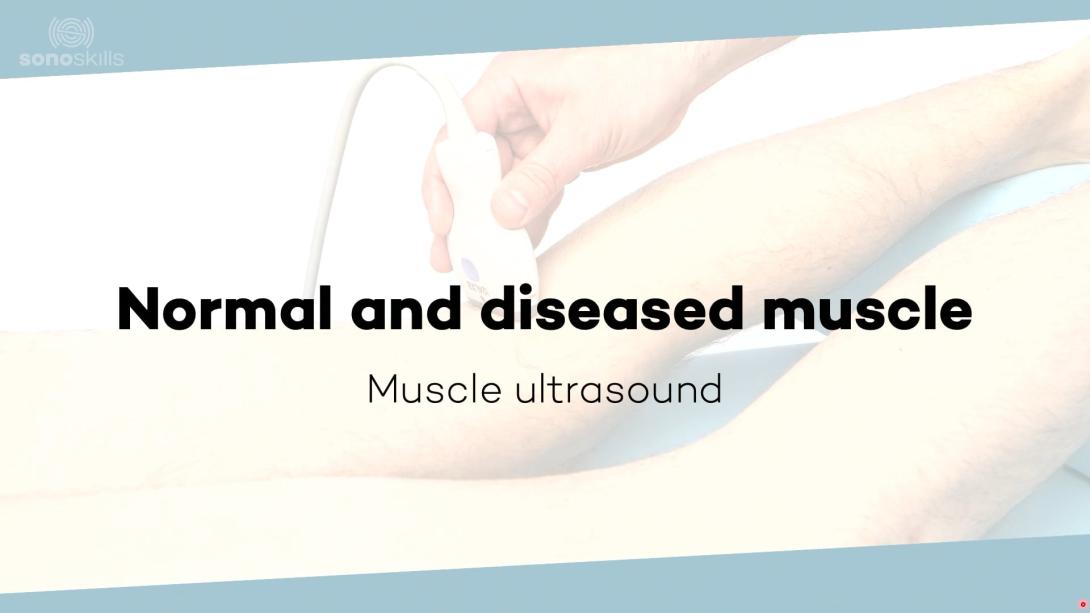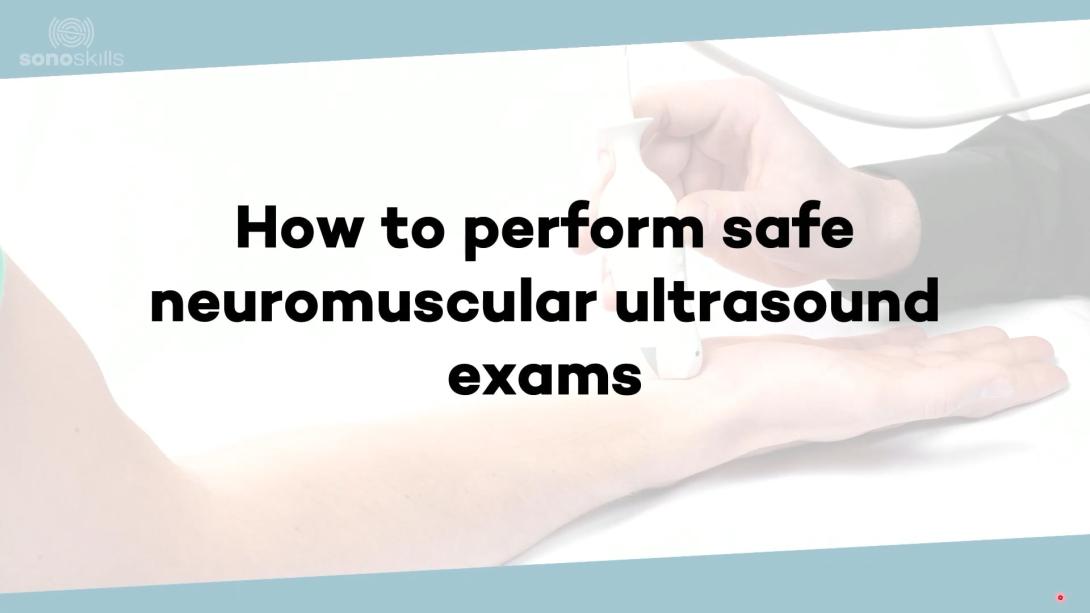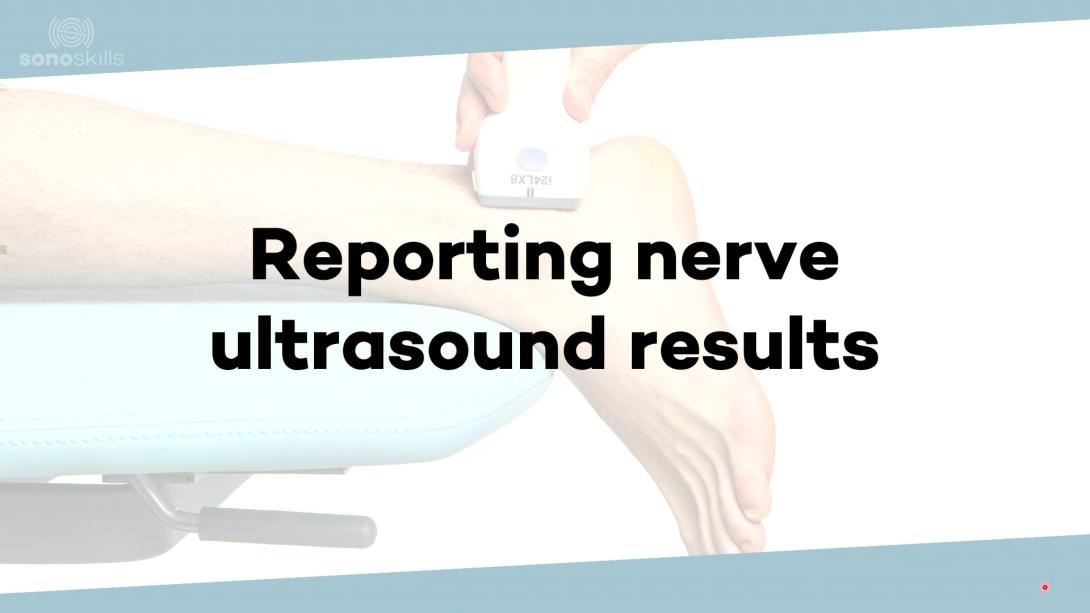Course Speakers
Curriculum
Chapter 1
Free lectures
3 lectures and 0 quizzes
Lectures & Quizzes:
Chapter 2
1 CME
Introduction to nerve ultrasound
In this chapter, we'll introduce you to the world of ultrasound and specifically neuromuscular ultrasound.
8 lectures and 1 quizzes
Lectures & Quizzes:
Chapter 3
1 CME
Anatomical tissues in ultrasound
In this chapter, we'll take a look at the appearance of various anatomical tissues with ultrasound.
6 lectures and 1 quizzes
Lectures & Quizzes:
Chapter 4
0.5 CME
Qualitative scanning
In this chapter, we'll discuss the proper technique to create qualitative scanning using the scanning checklist.
5 lectures and 1 quizzes
Lectures & Quizzes:
Chapter 5
1 CME
Median nerve
In this chapter, we'll cover the median nerve, the most scanned nerve in the world! We'll refresh the anatomy and show how to scan this nerve and where to look for pathology.
5 lectures and 1 quizzes
Lectures & Quizzes:
Chapter 6
1 CME
Ulnar nerve
In this chapter, we'll discuss the ulnar nerve, we'll look at the anatomy, sonoanatomy, demonstrate the scan technique and show interesting pathology cases of the ulnar nerve.
7 lectures and 1 quizzes
Lectures & Quizzes:
Chapter 7
1 CME
Radial nerve
In this chapter, we'll cover the radial nerve, we'll look at the anatomy and sonoanatomy. Next, we'll demonstrate the proper scanning technique and lastly, show interesting pathology cases of the radial nerve.
7 lectures and 1 quizzes
Lectures & Quizzes:
Chapter 8
0.75 CME
Fibular nerve
In this chapter, we'll look at the fibular nerve, we'll refresh the anatomy and look at the sonoanatomy. We'll demonstrate the scanning technique and show interesting pathology cases of the fibular nerve.
5 lectures and 1 quizzes
Lectures & Quizzes:
Chapter 9
0.5 CME
Tibial nerve
In this chapter, we'll cover the tibial nerve, we'll look at the anatomy and sonoanatomy. Next, we'll demonstrate the proper scanning technique and lastly show interesting pathology cases of the tibial nerve.
5 lectures and 1 quizzes
Lectures & Quizzes:
Chapter 10
0.75 CME
Sural Nerve
In this chapter, we'll discuss the sural nerve, we'll look at the anatomy, sonoanatomy, demonstrate the scan technique and show interesting pathology cases of the sural nerve.
5 lectures and 1 quizzes
Lectures & Quizzes:
Chapter 11
0.75 CME
Muscle
In this chapter, we'll discuss the muscles and their relation to nerve ultrasound, we'll look at common variants in nerve and muscle anatomy and how a normal and diseased muscle looks like.
4 lectures and 1 quizzes
Lectures & Quizzes:
Chapter 12
0.25 CME
How to bring it into practice?
In this final chapter, we'll share some tips and tricks on how to incorporate neuromuscular ultrasound in clinical practice.
2 lectures and 1 quizzes
Lectures & Quizzes:
Objectives

Understand the basic anatomy and physiology of the human neuromuscular system and how it relates to ultrasound imaging.
Learn the principles of ultrasound physics and instrumentation as they pertain to musculoskeletal imaging.
Become proficient in the scanning techniques used in nerve ultrasound, including the proper positioning of the patient and transducer, as well as image optimization.
Develop the skills necessary to accurately interpret and diagnose common nerve disorders and injuries using ultrasound imaging.
Gain a comprehensive understanding of the clinical applications of nerve ultrasound in various specialties, including neurology, sports medicine, physical therapy, and rehabilitation.
Ideal for:

Student Discount
Are you a student? Get 50% discount on this course by completing the student application form.
Get Student DiscountPricing
Half-Year Access
Our shortest option for very fast learners. Ideal for people who have plenty of time to learn.
You get:
- 6 months access to our course
- Ability to complete quizzes and earn CME credits
One-Year Access
Our most recommended access duration to dive deep into the course. Save 30% on the 6-month option.
You get:
- 12 months access to our course
- Ability to complete quizzes and earn CME credits
Two-Year Access
If you want to take your time learning, this option is perfect for you. Save 40% on the 6-month option.
You get:
- 24 months access to our course
- Ability to complete quizzes and earn CME credits
One-Month Access
Take the most flexible route with a monthly subscription.
You get:
- Cancellation possible anytime after 4 months minimum run time
- Ability to complete quizzes and earn CME credits

